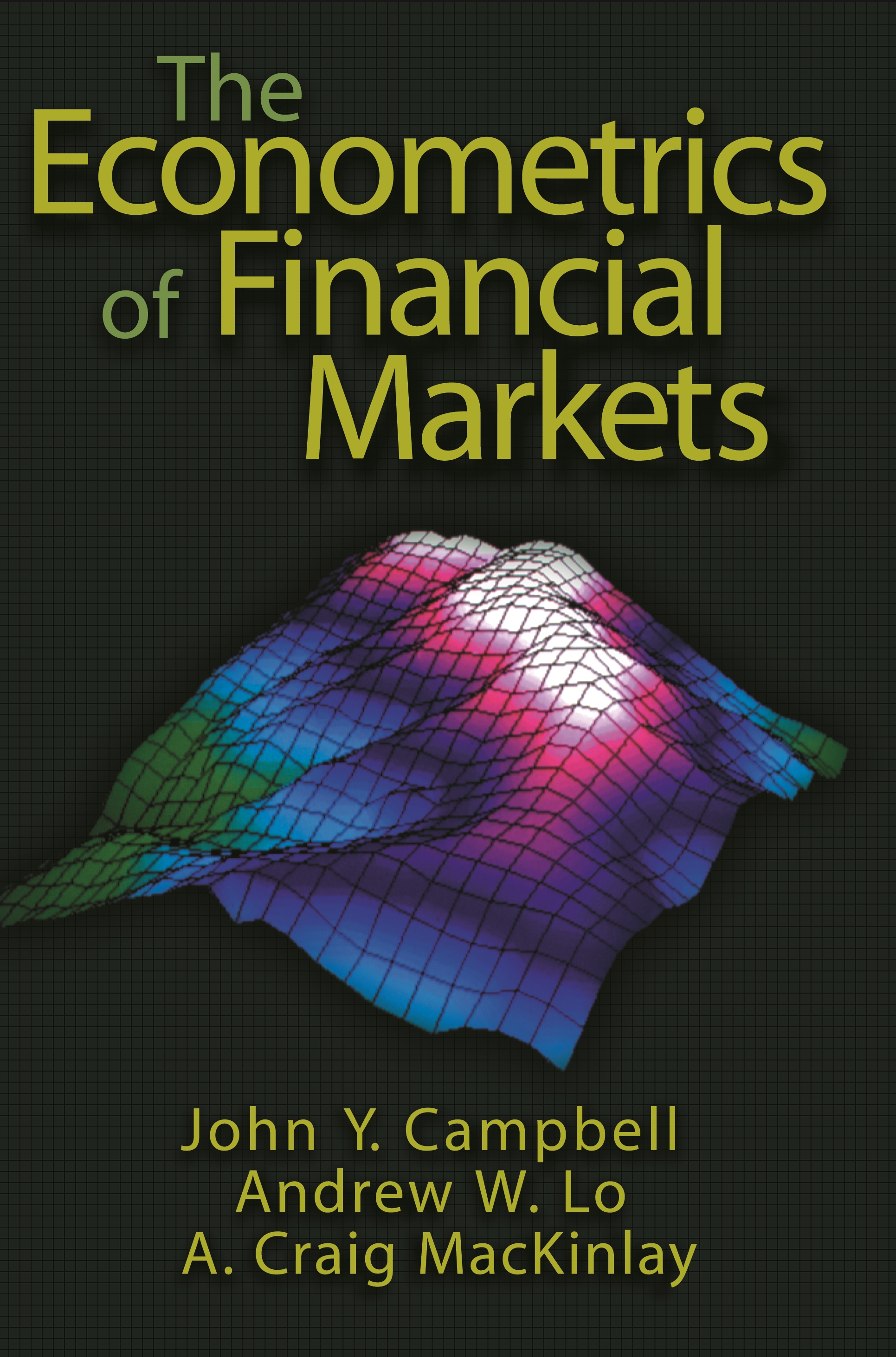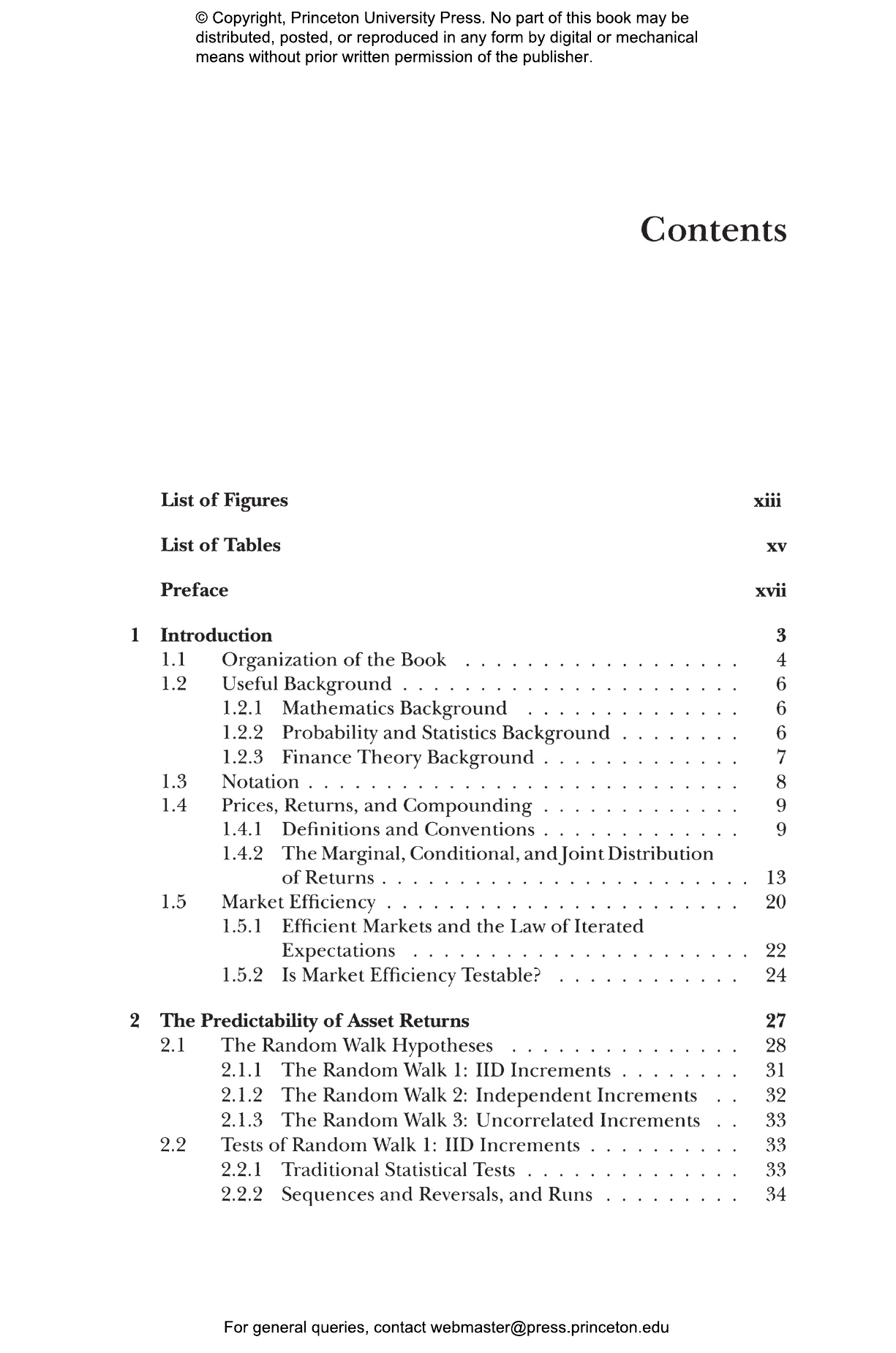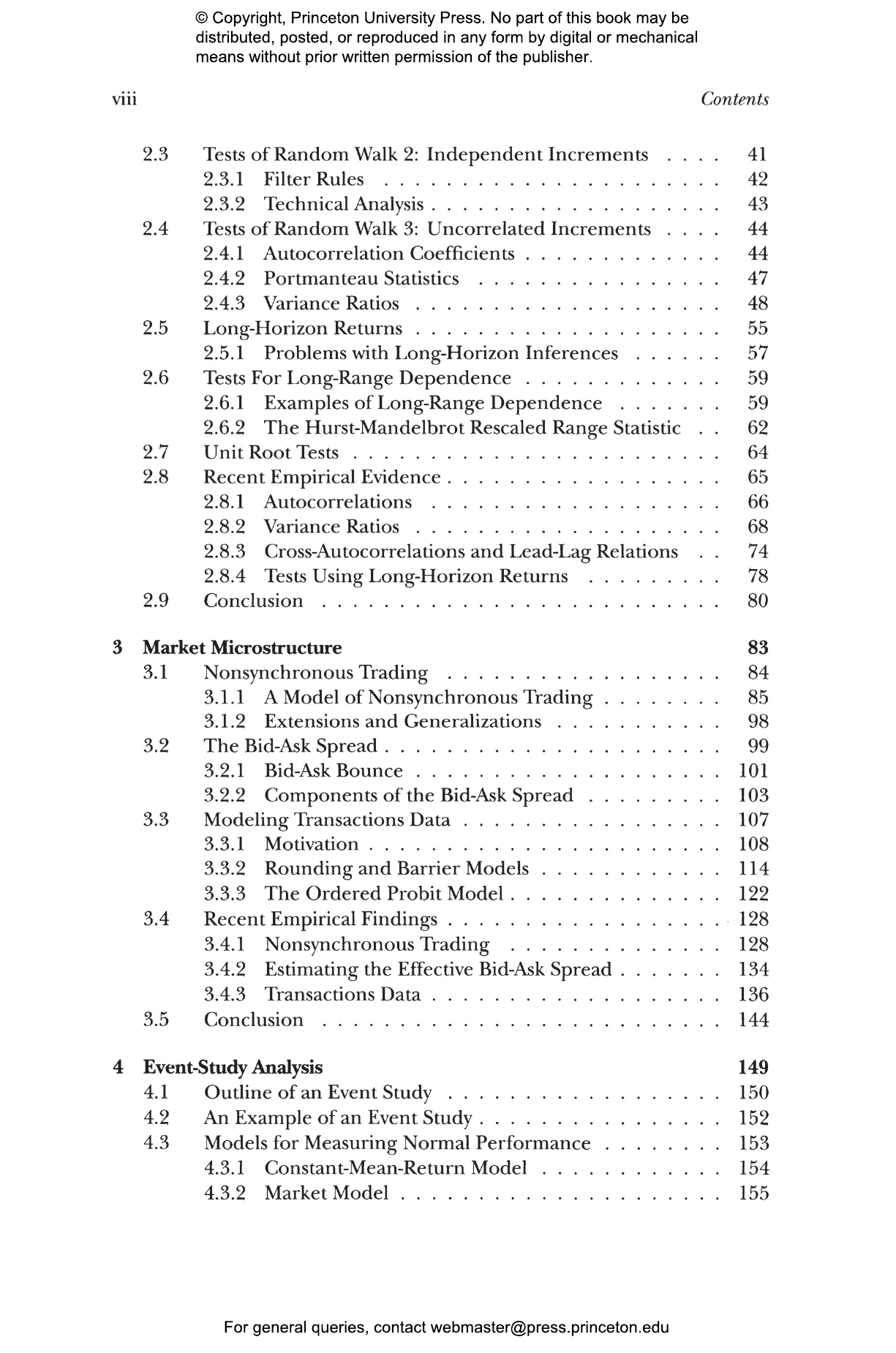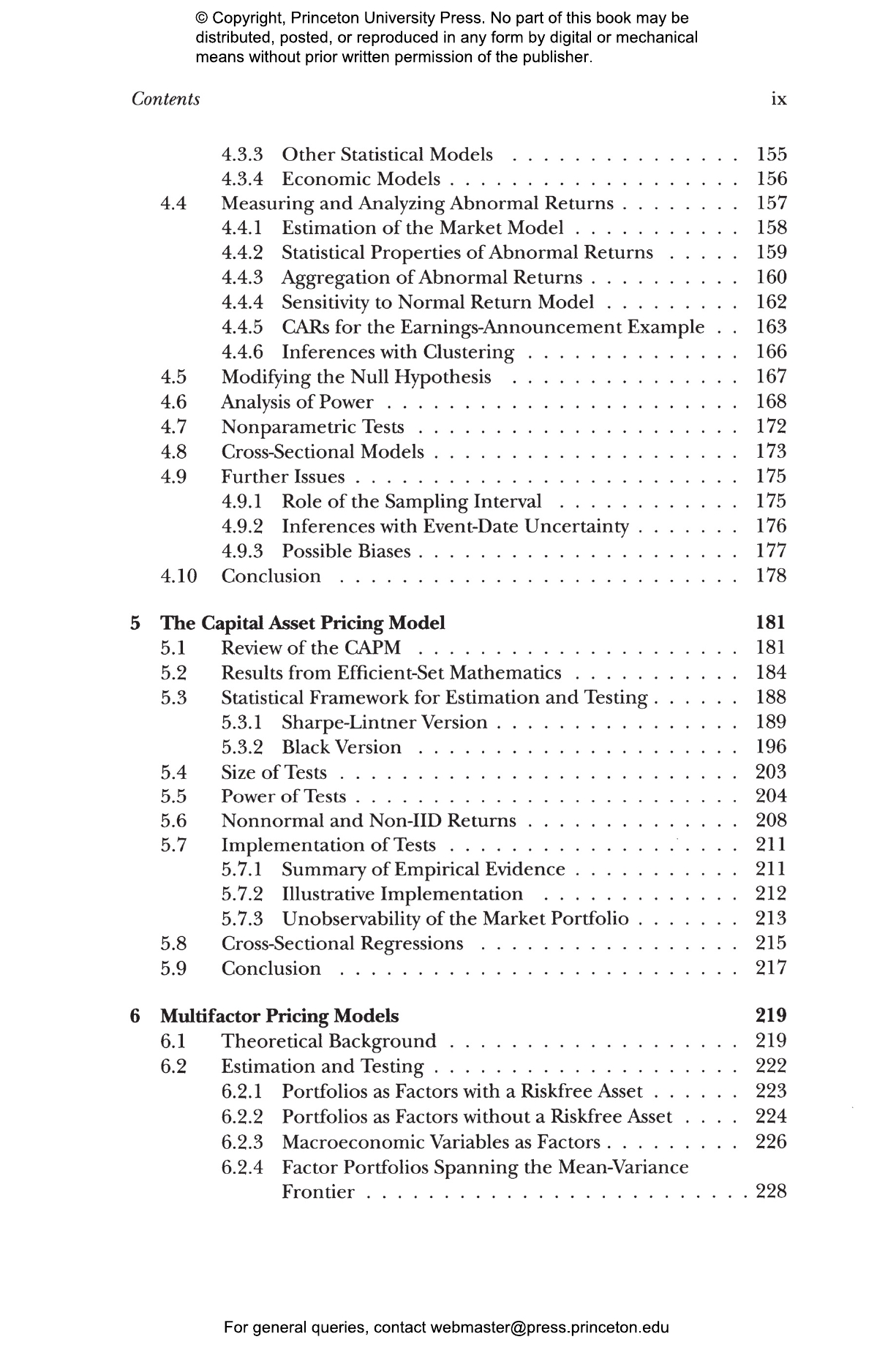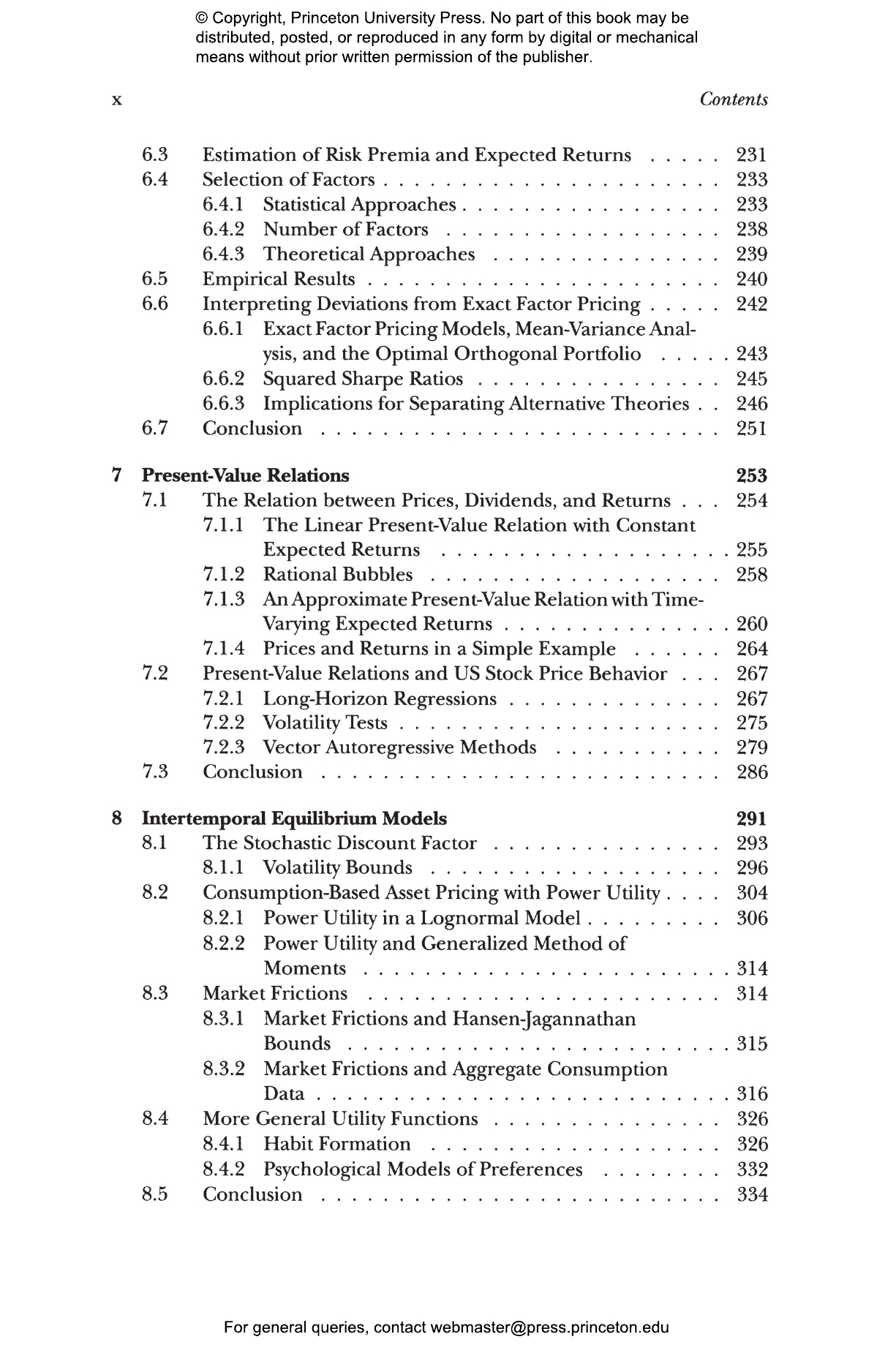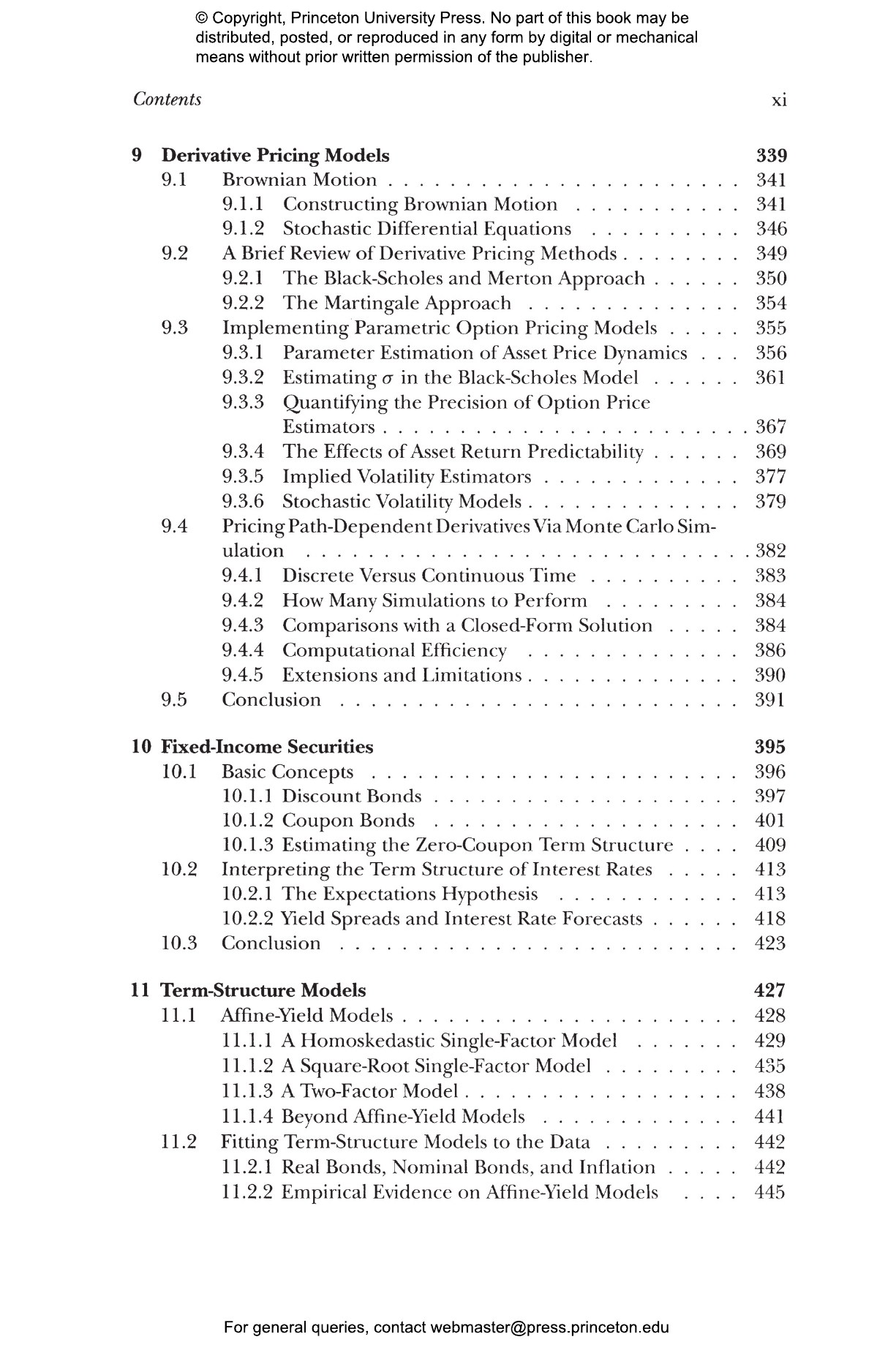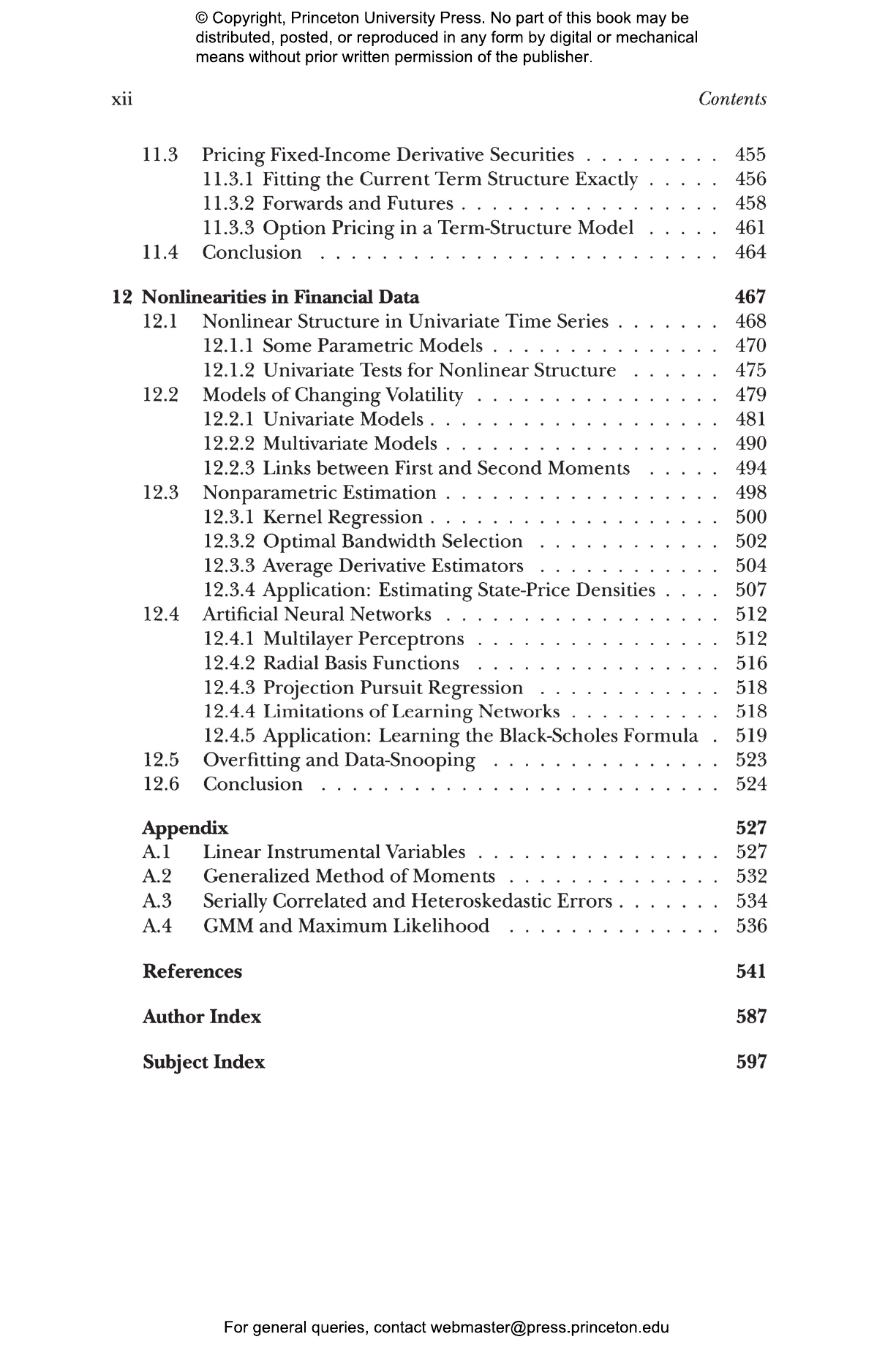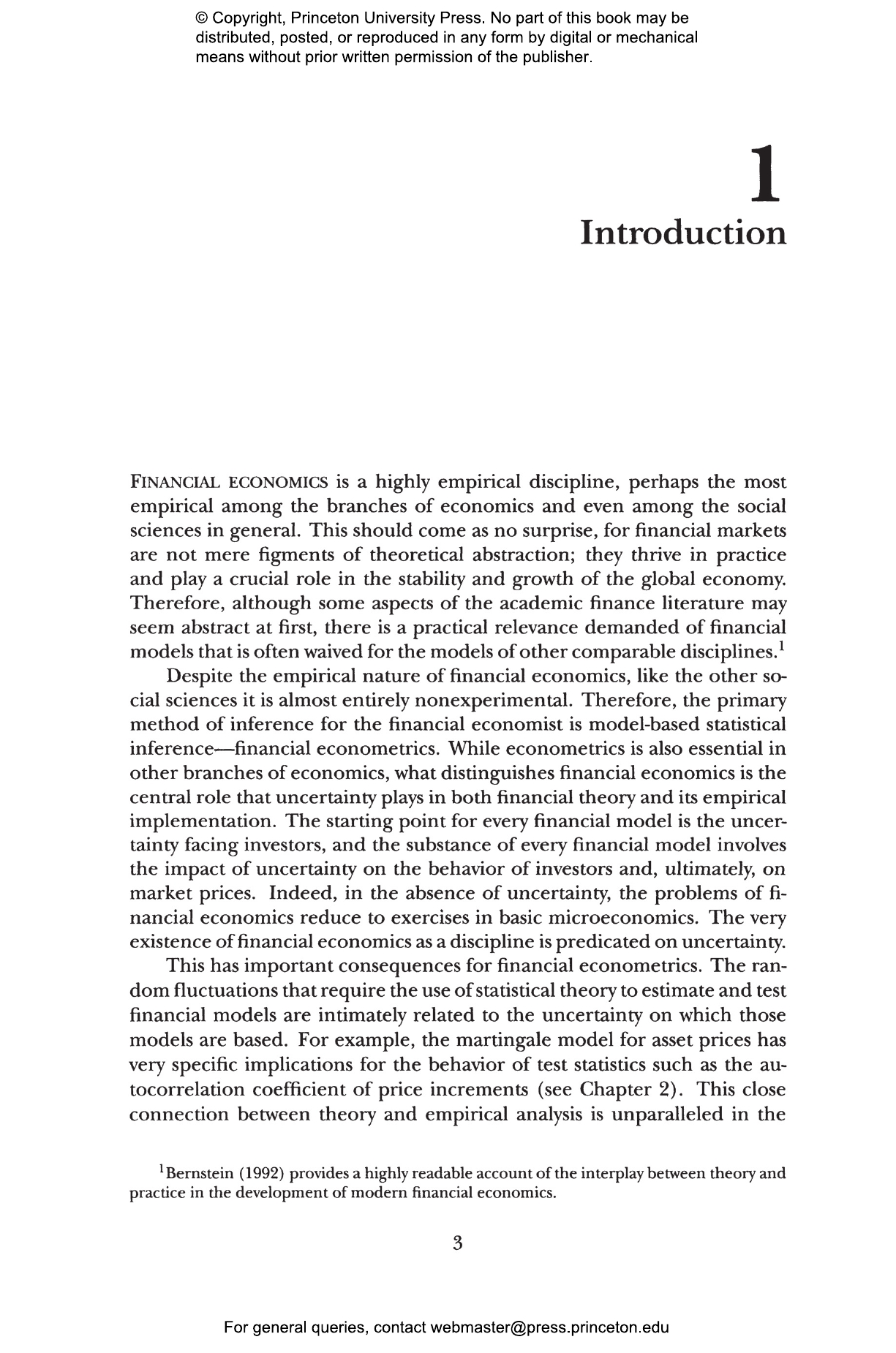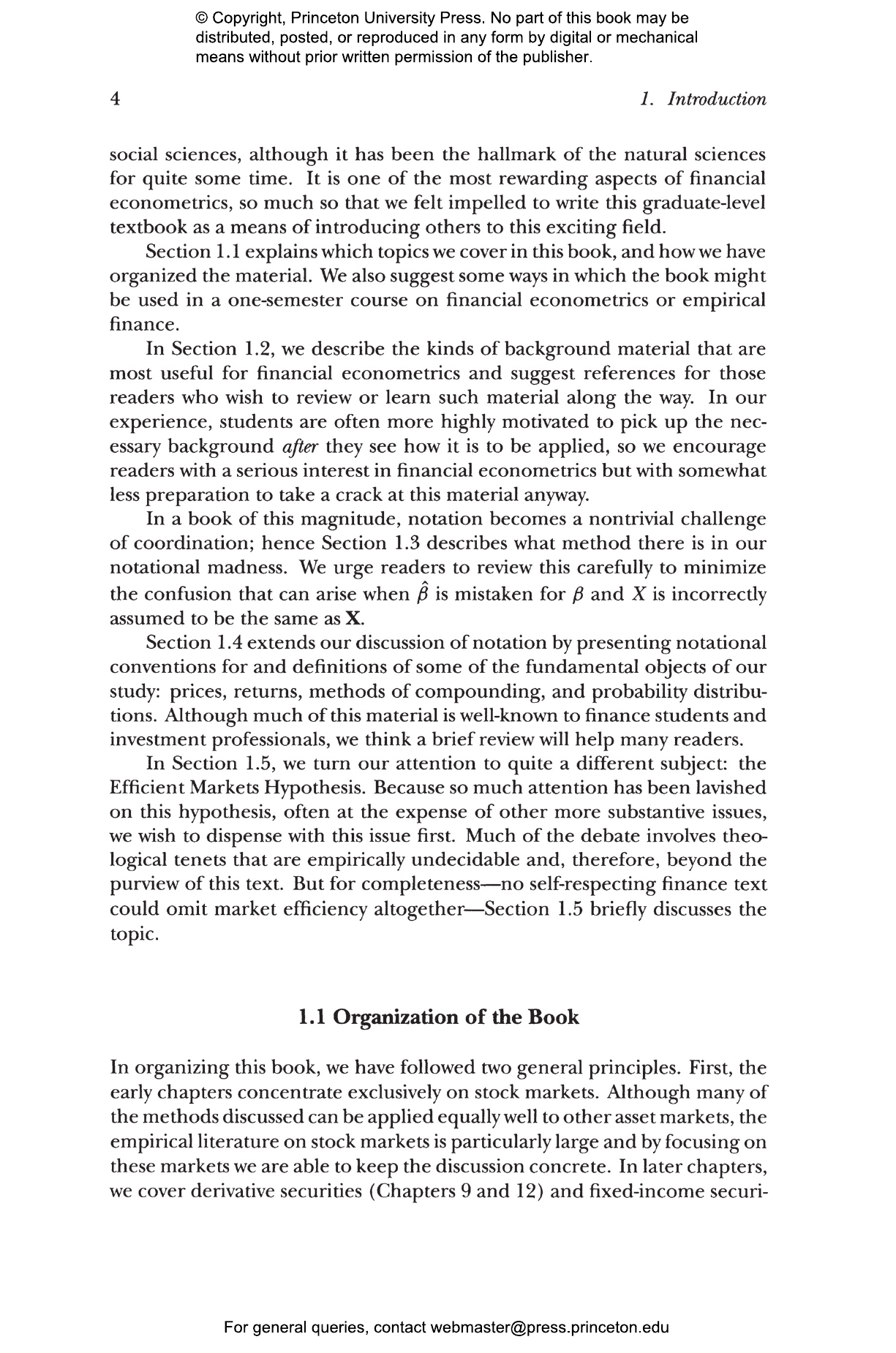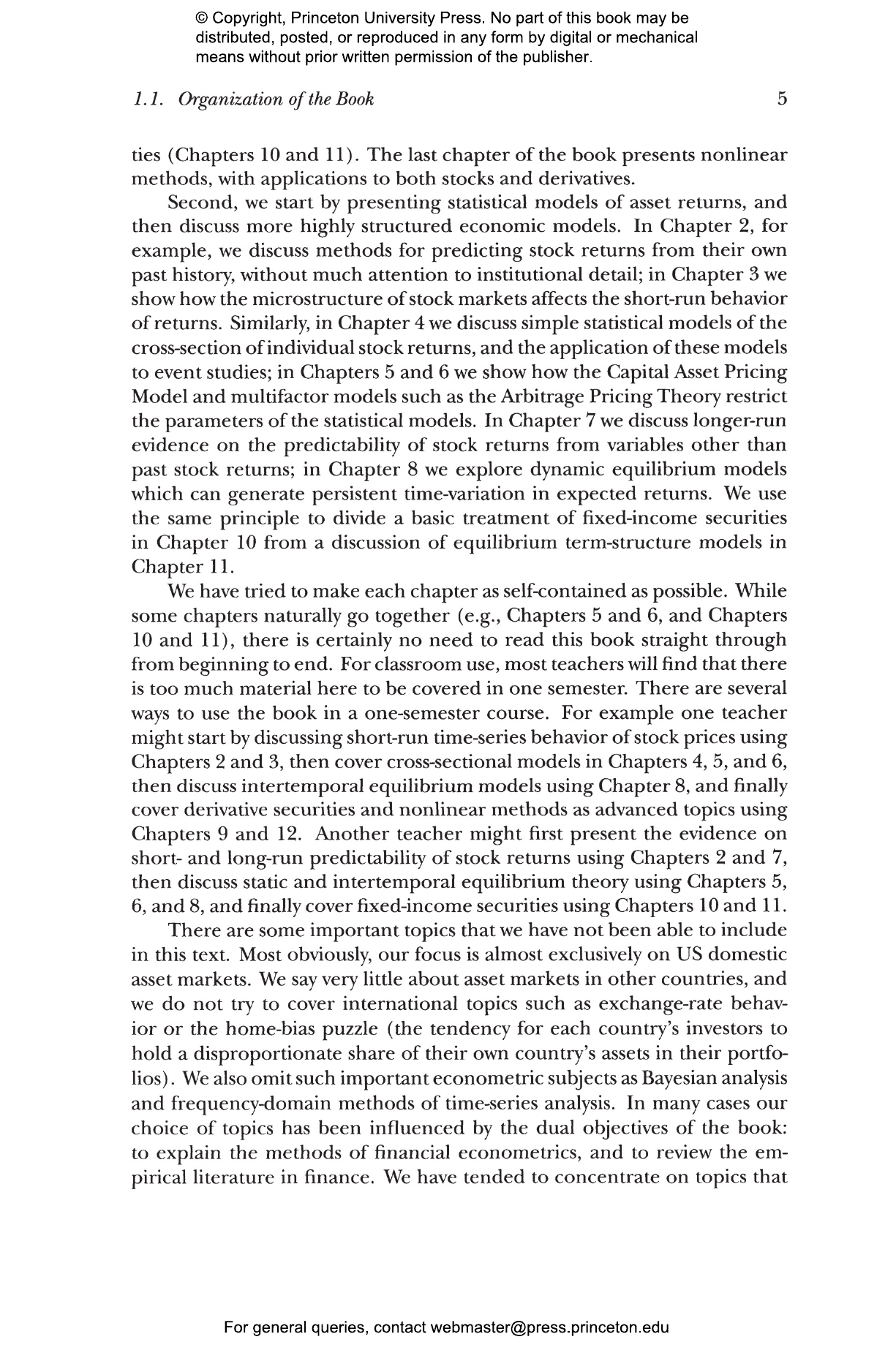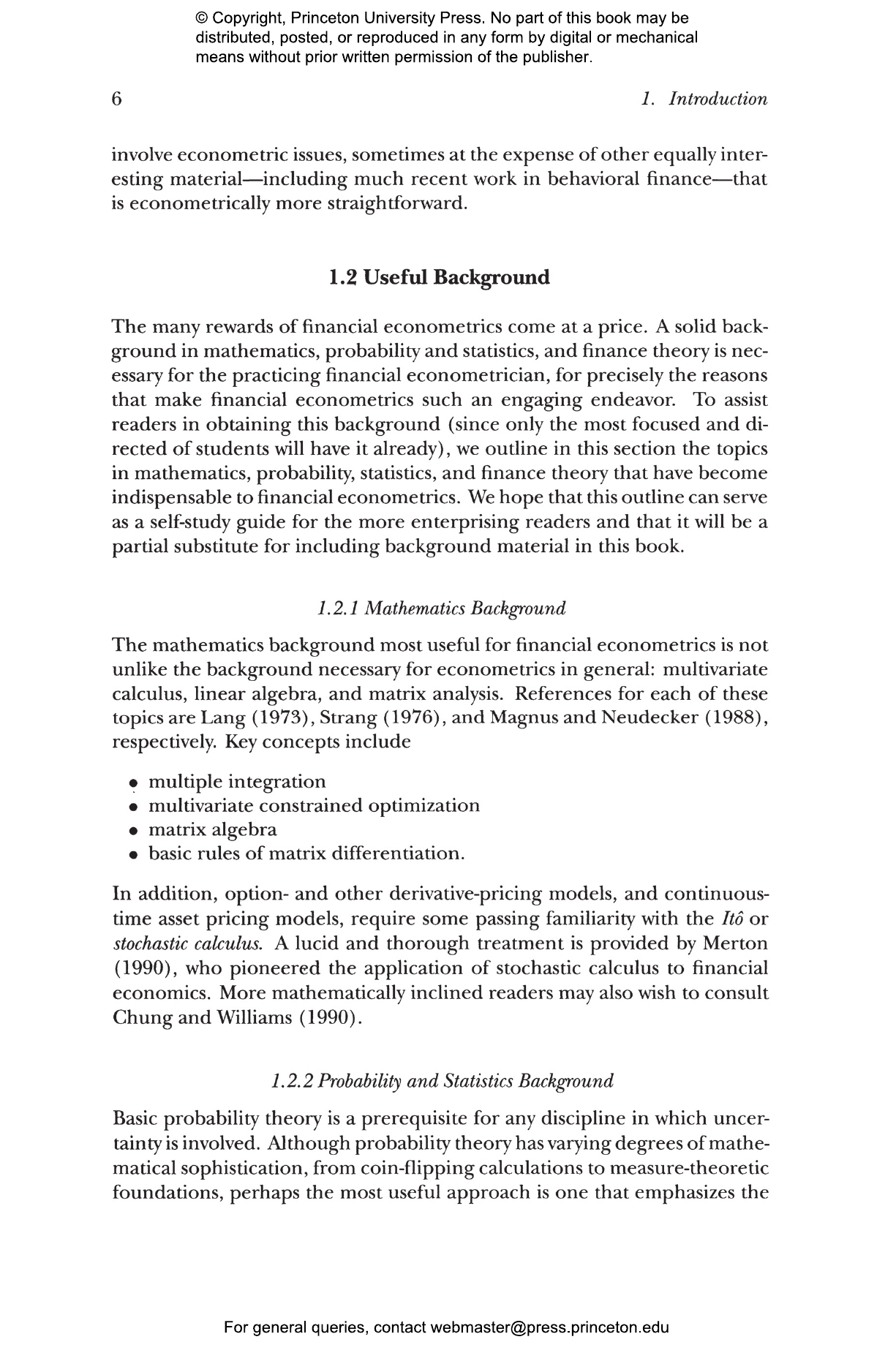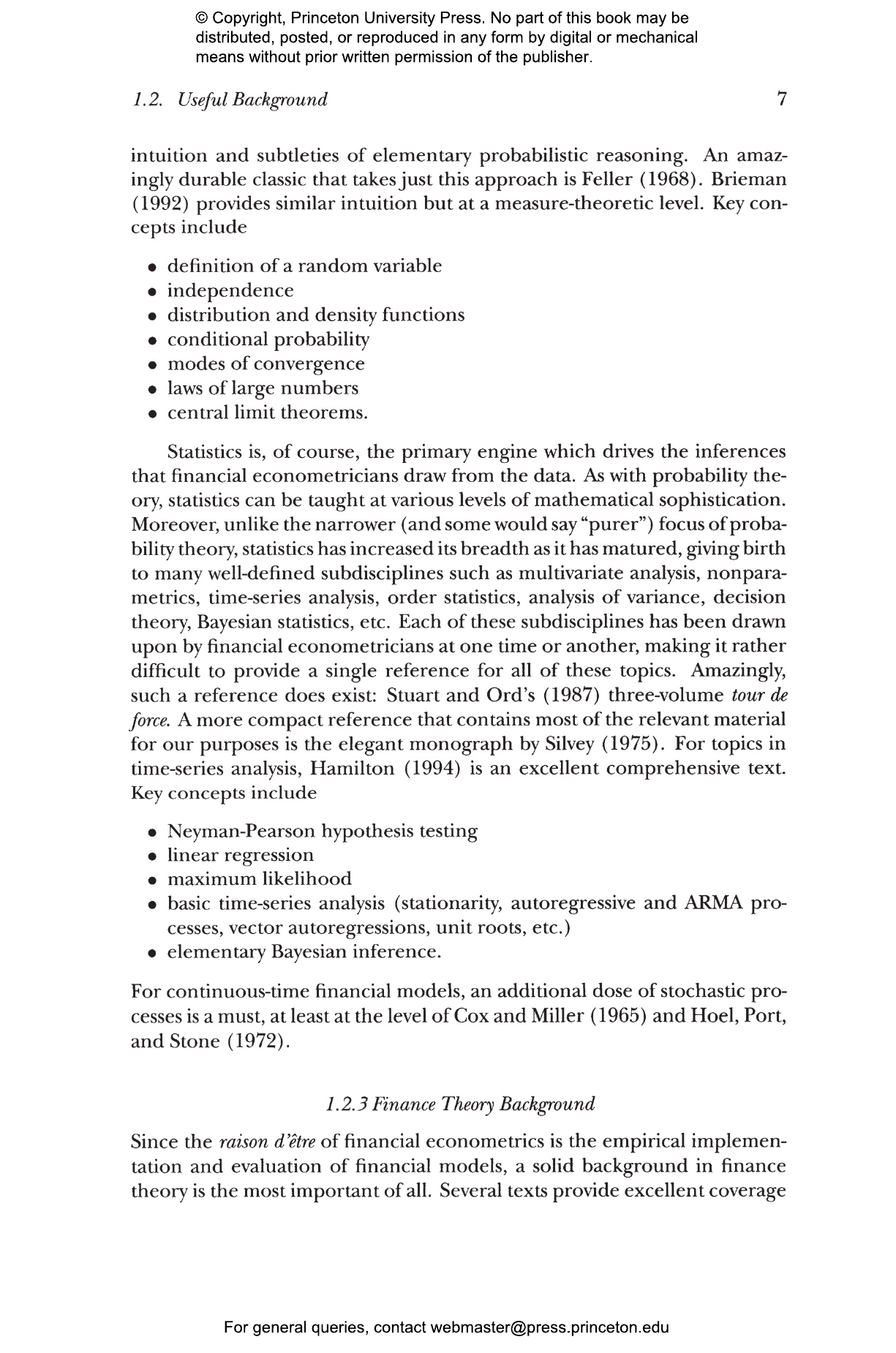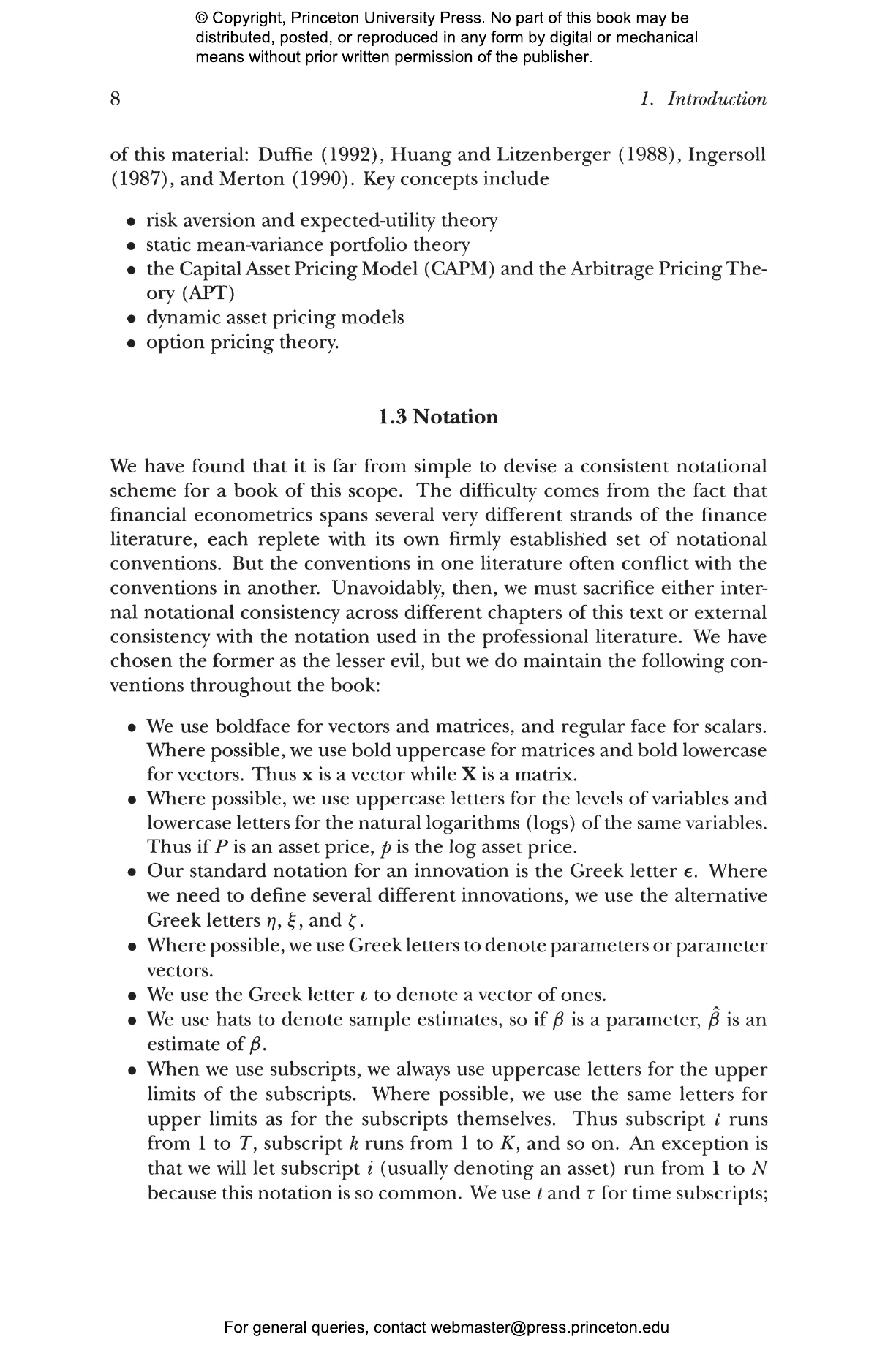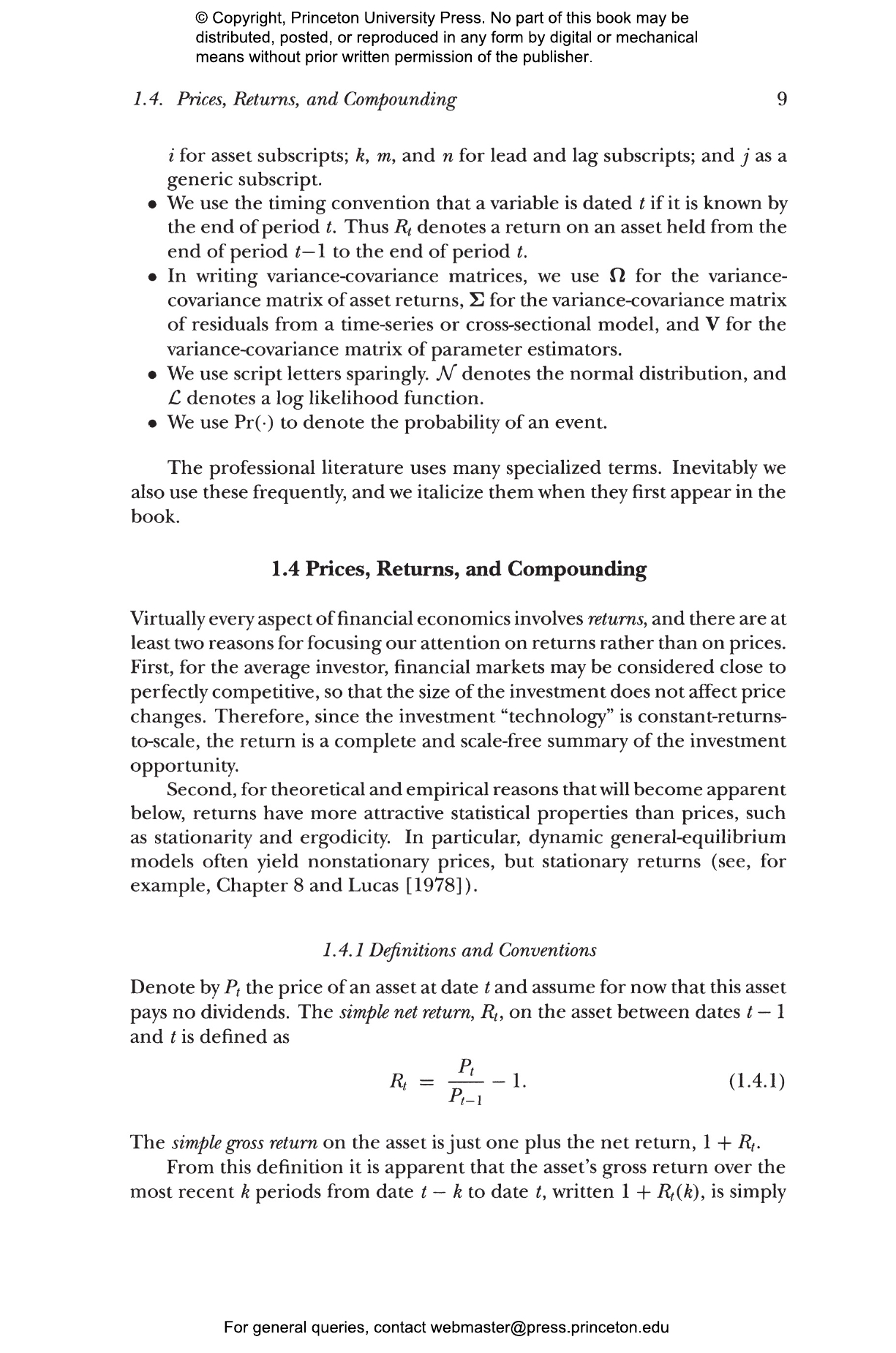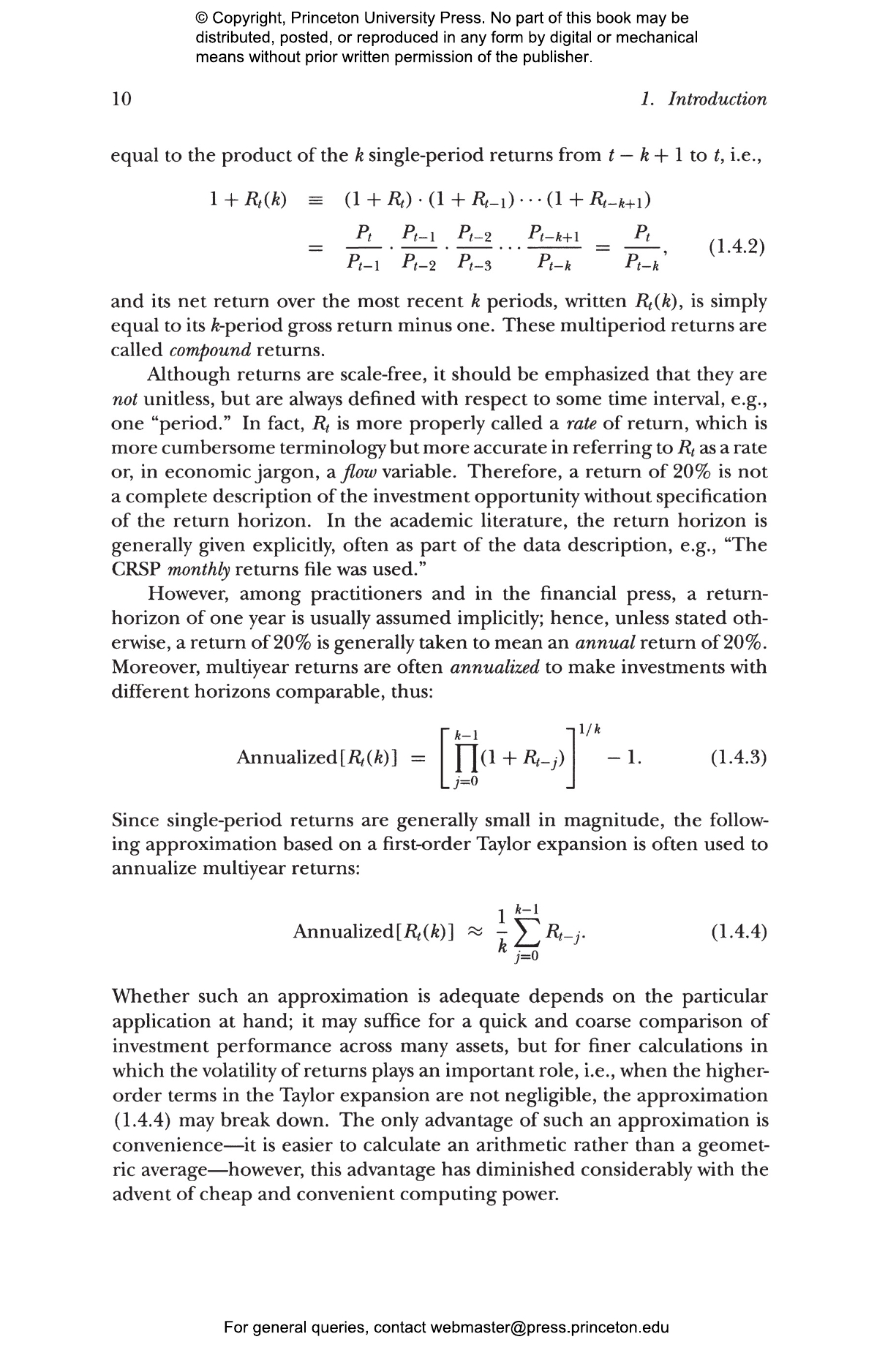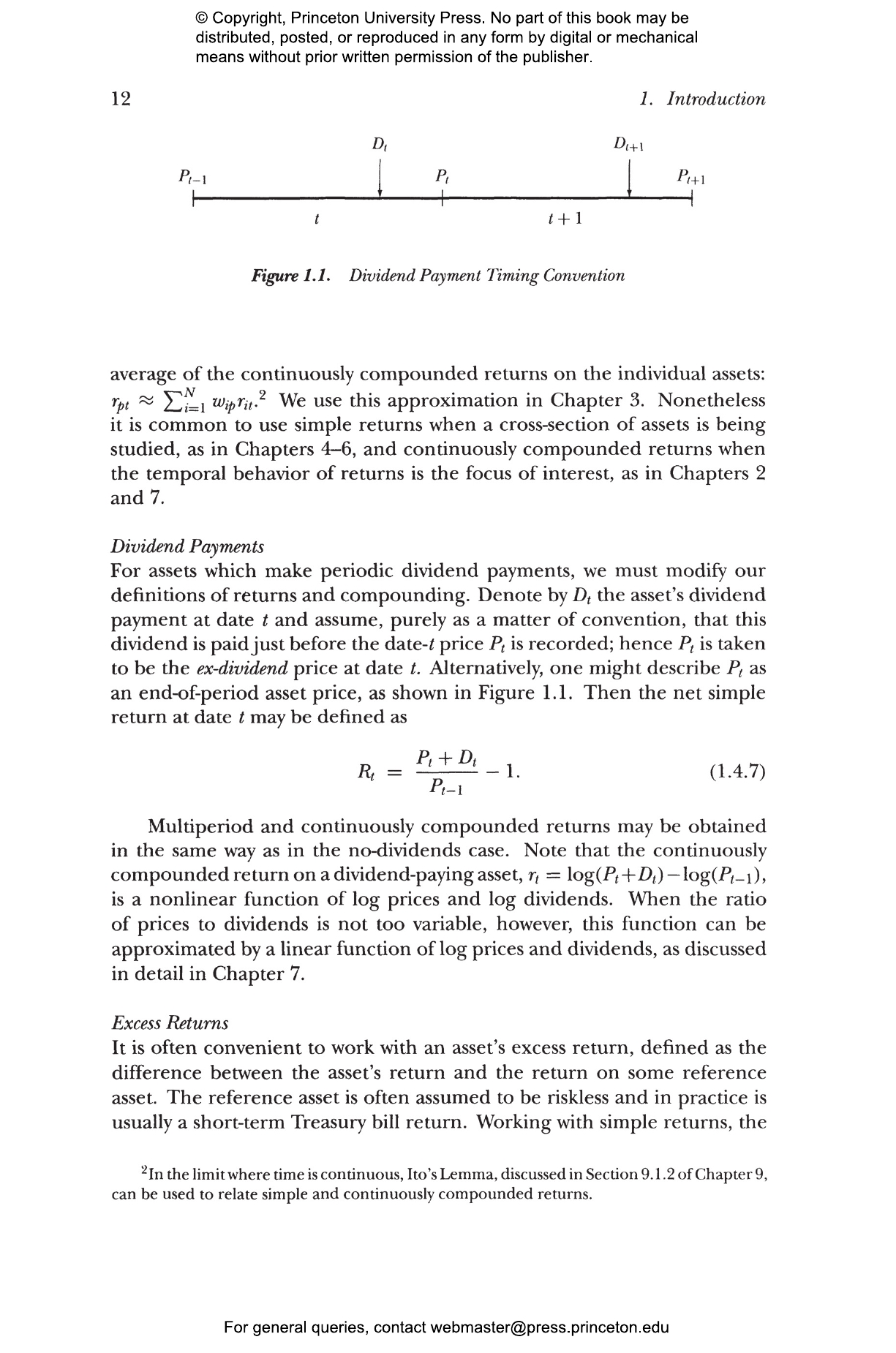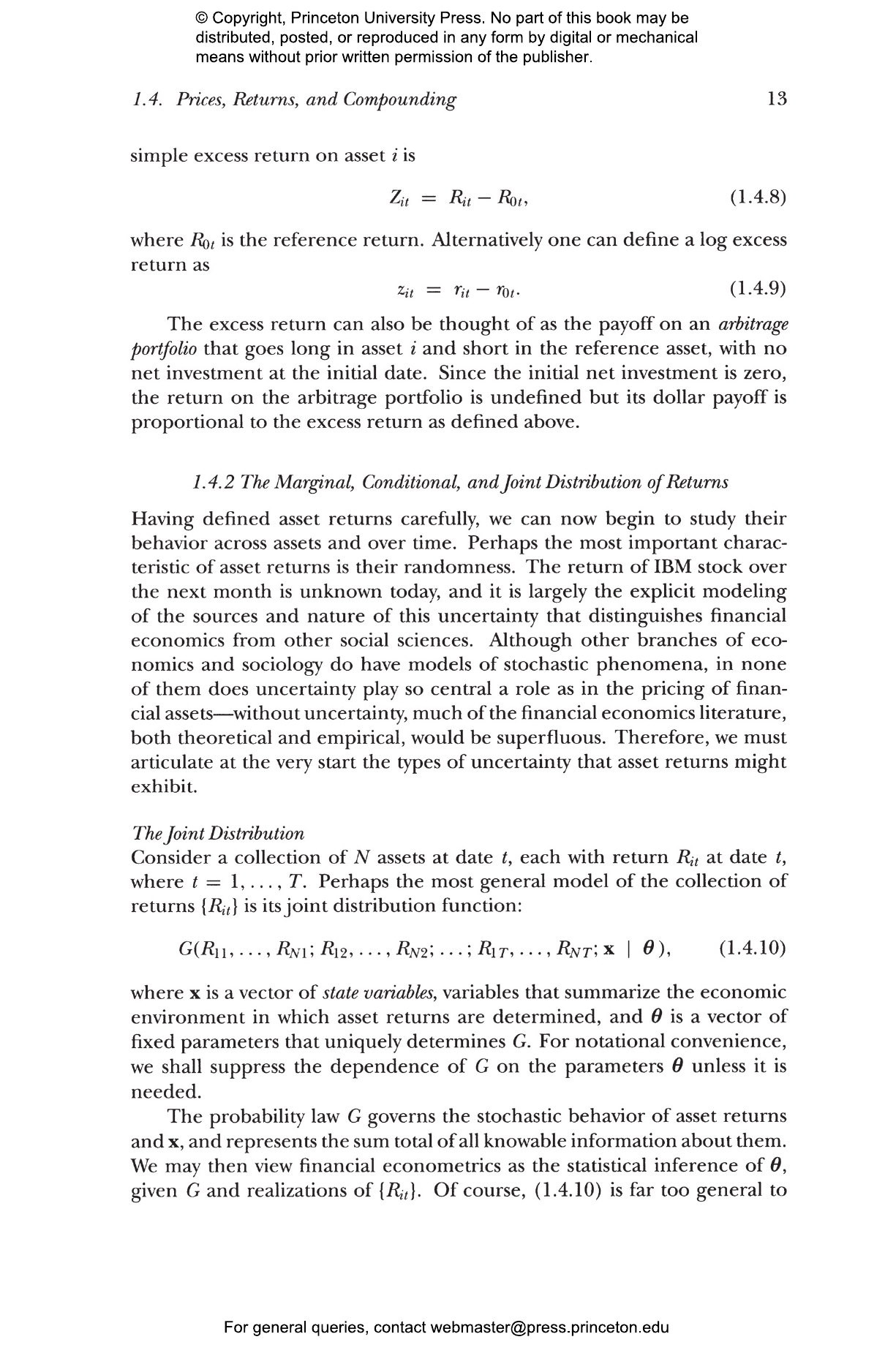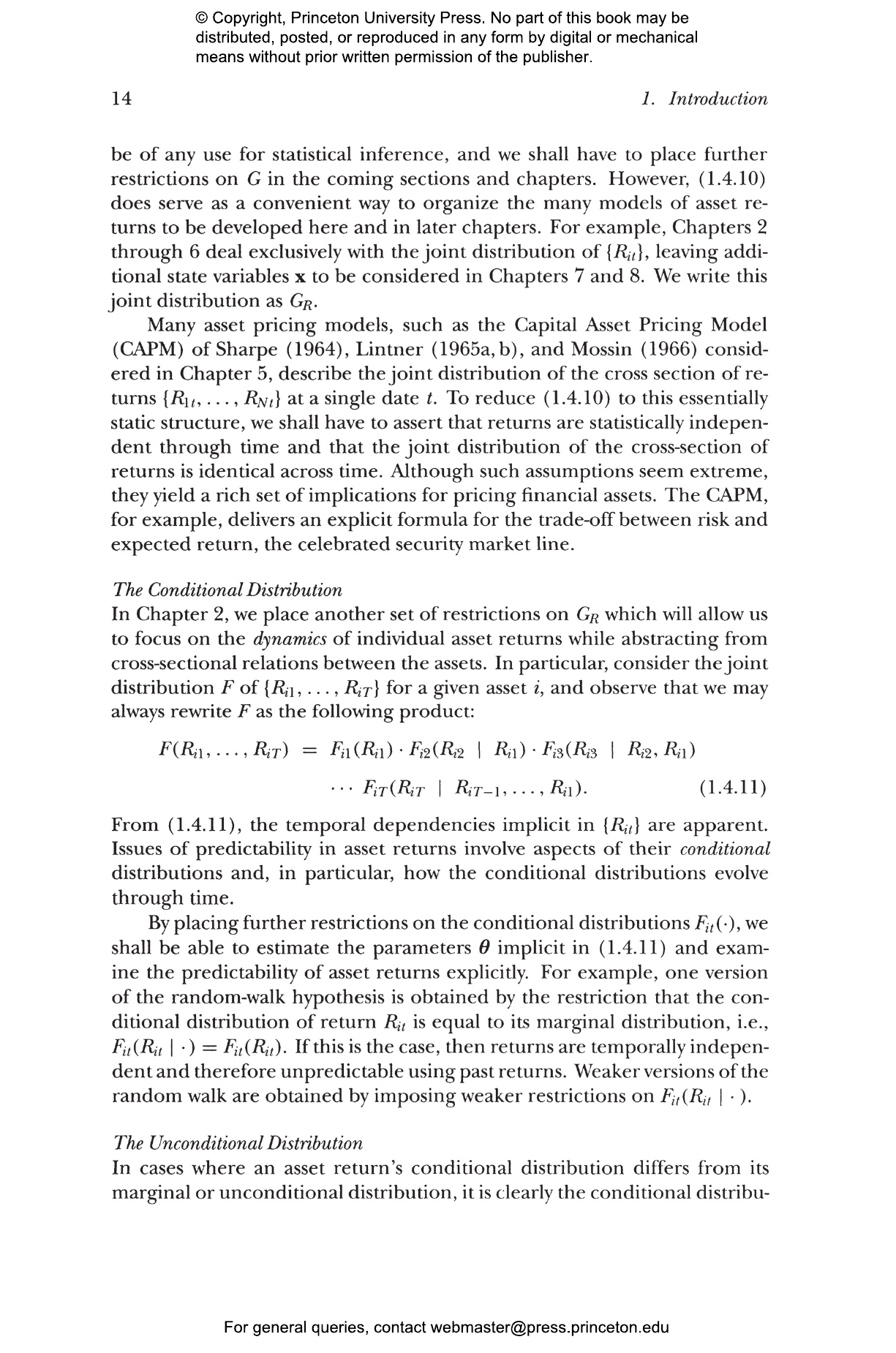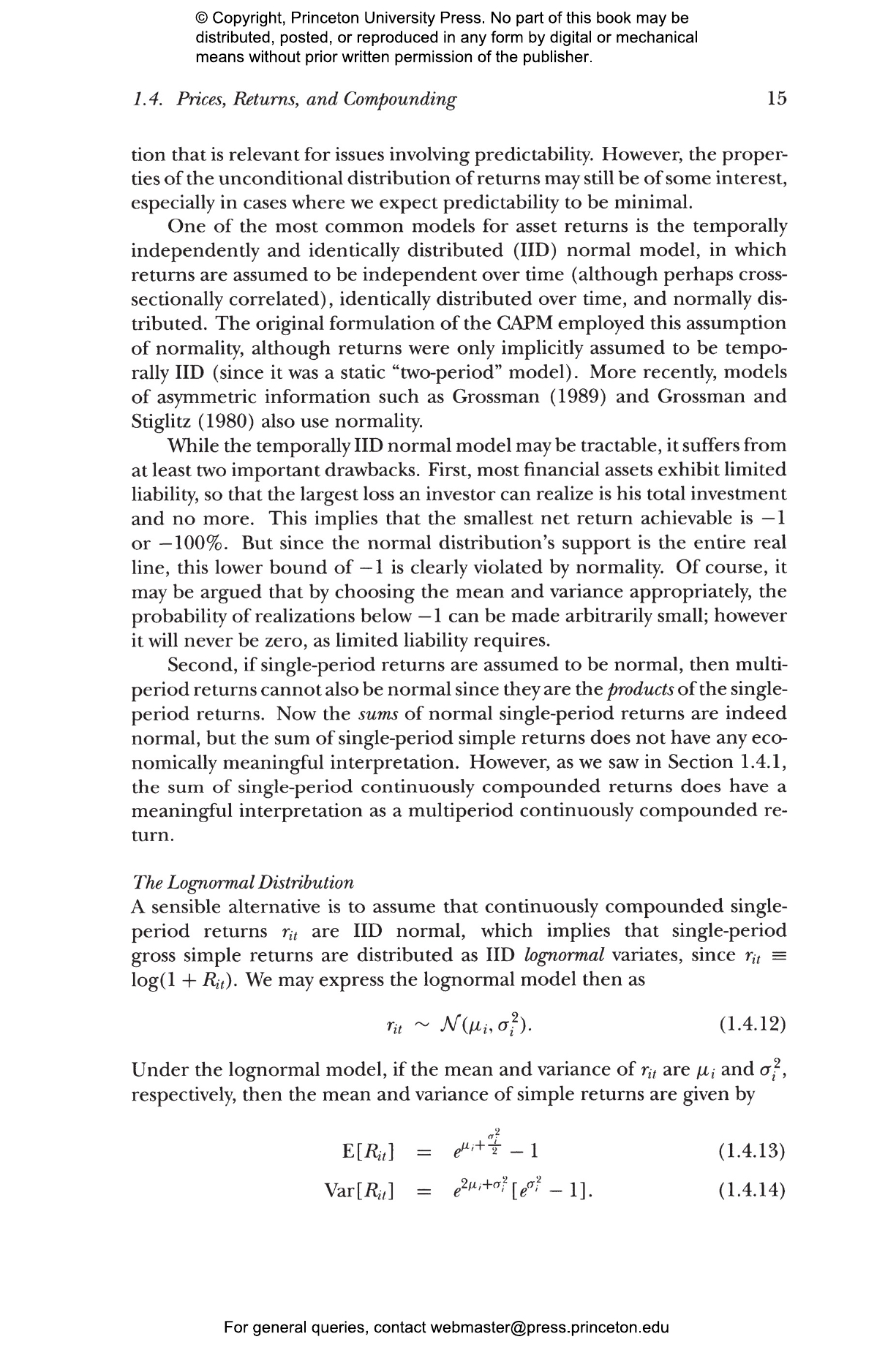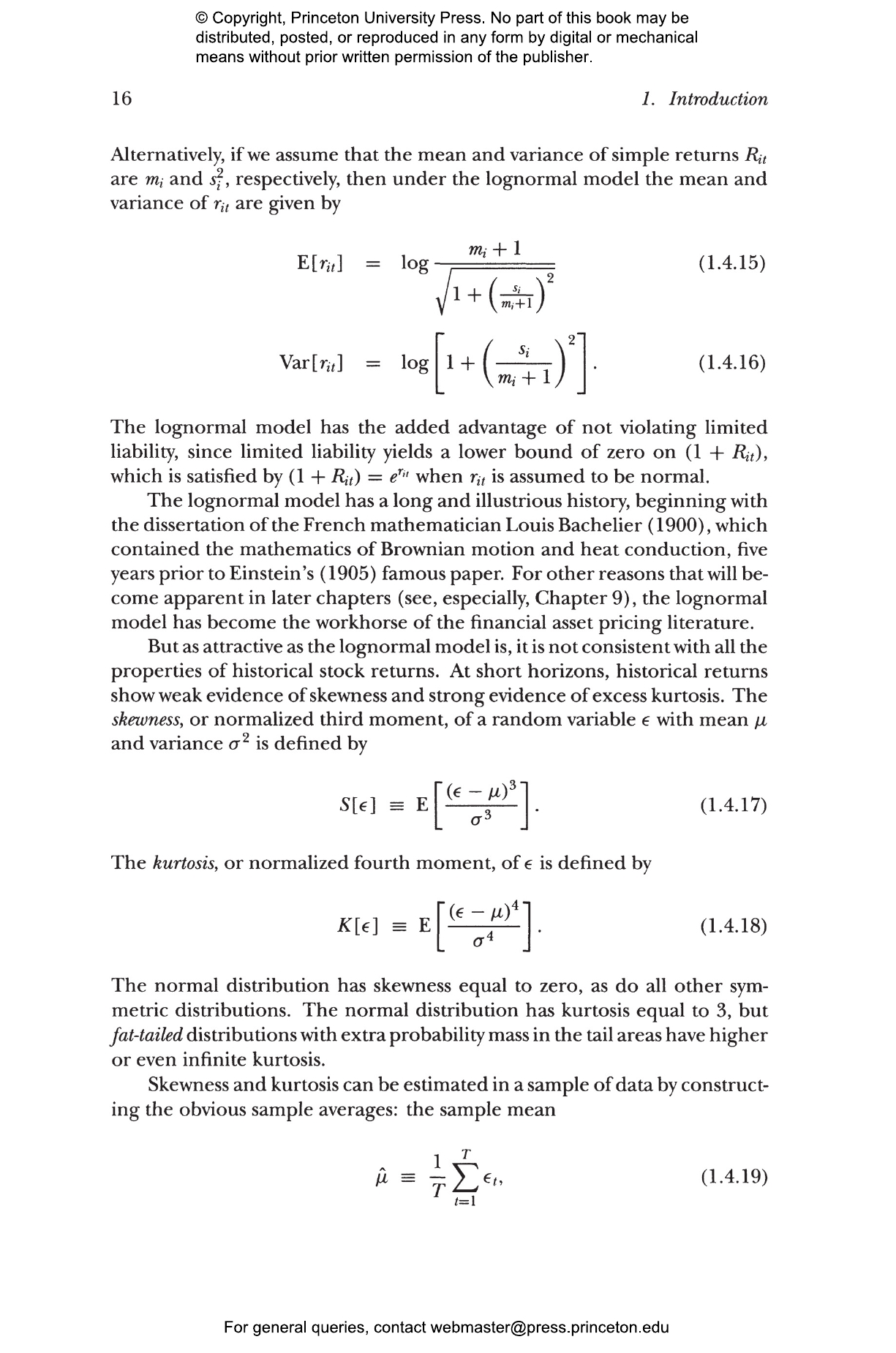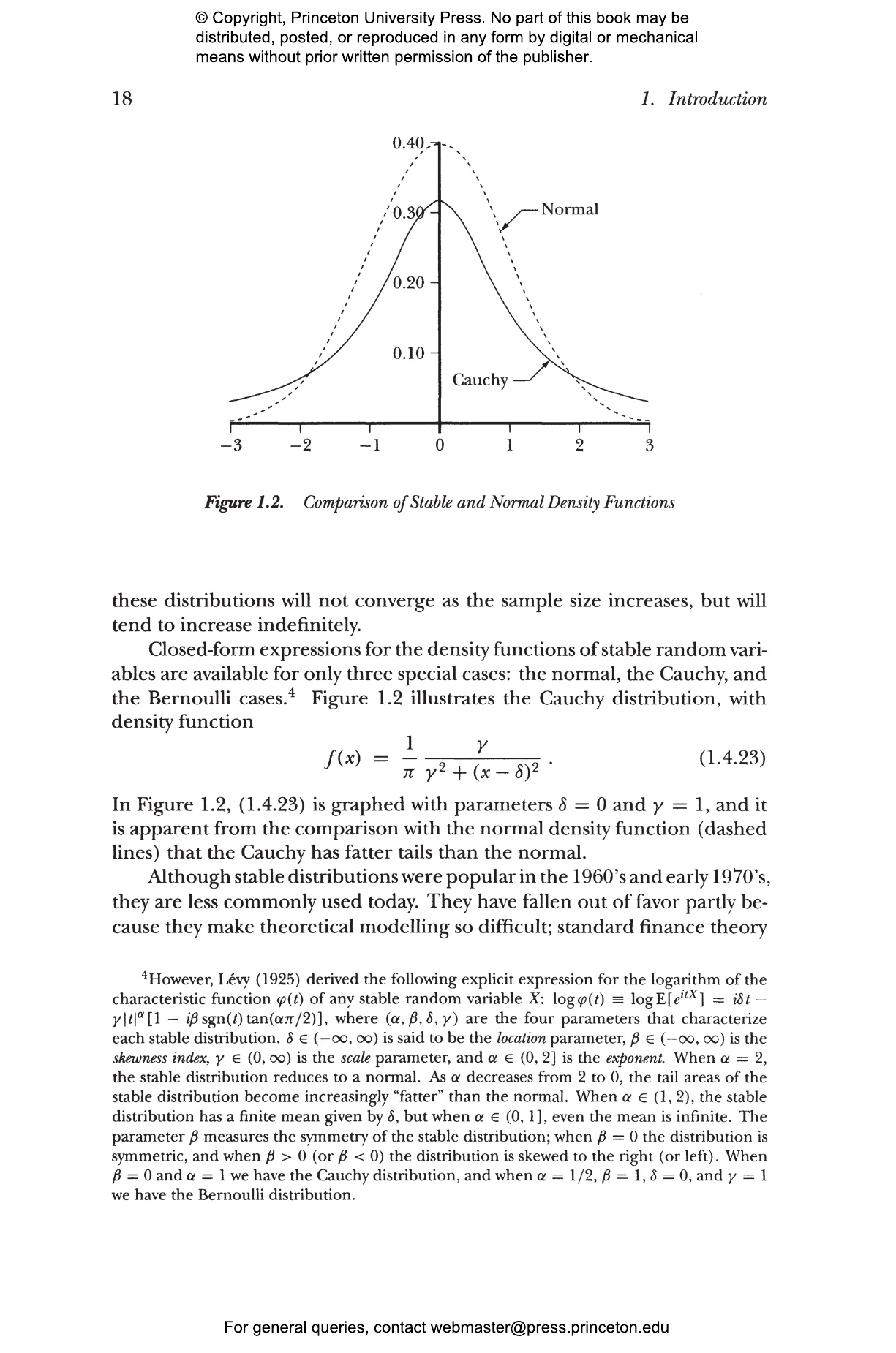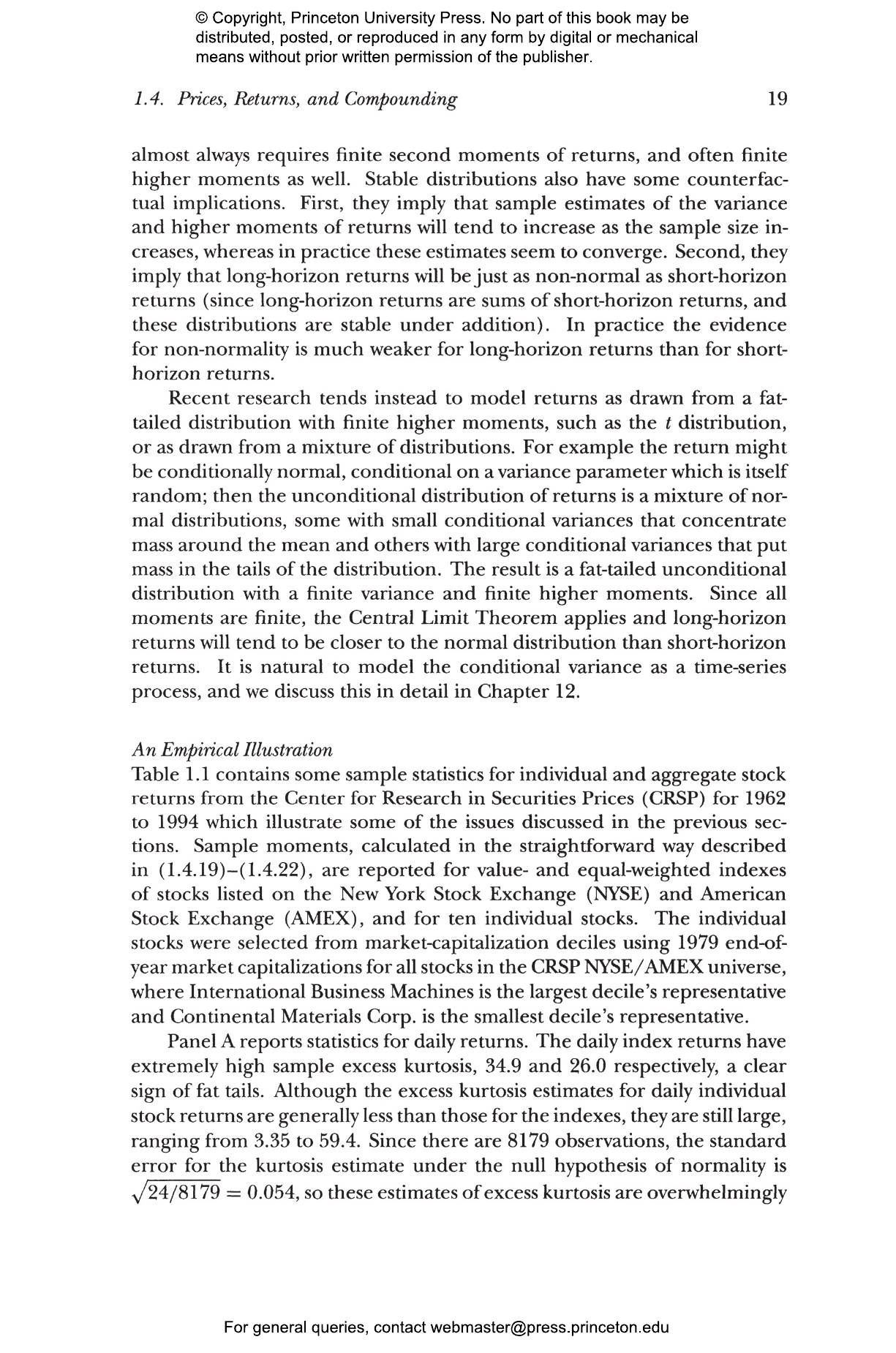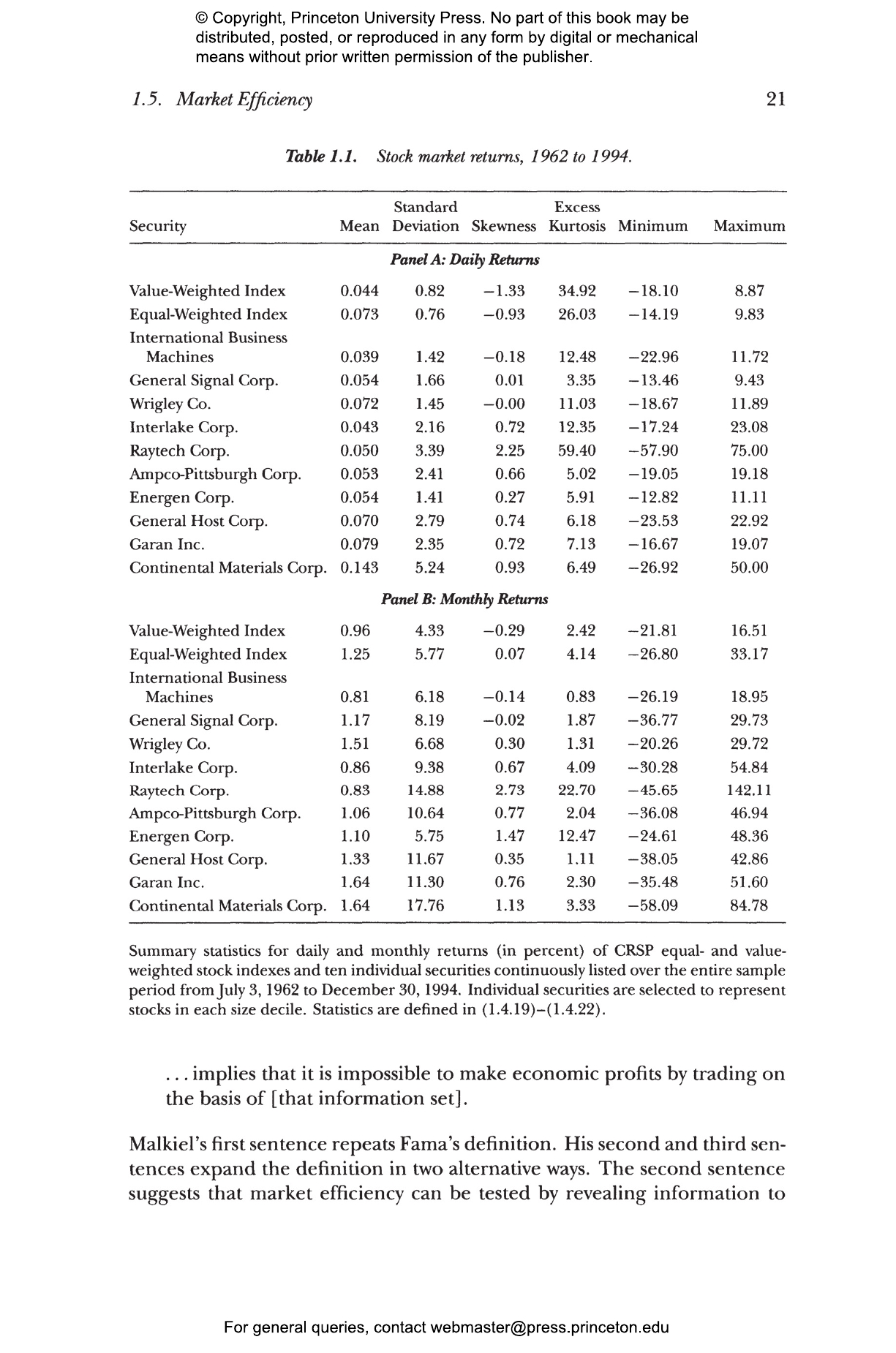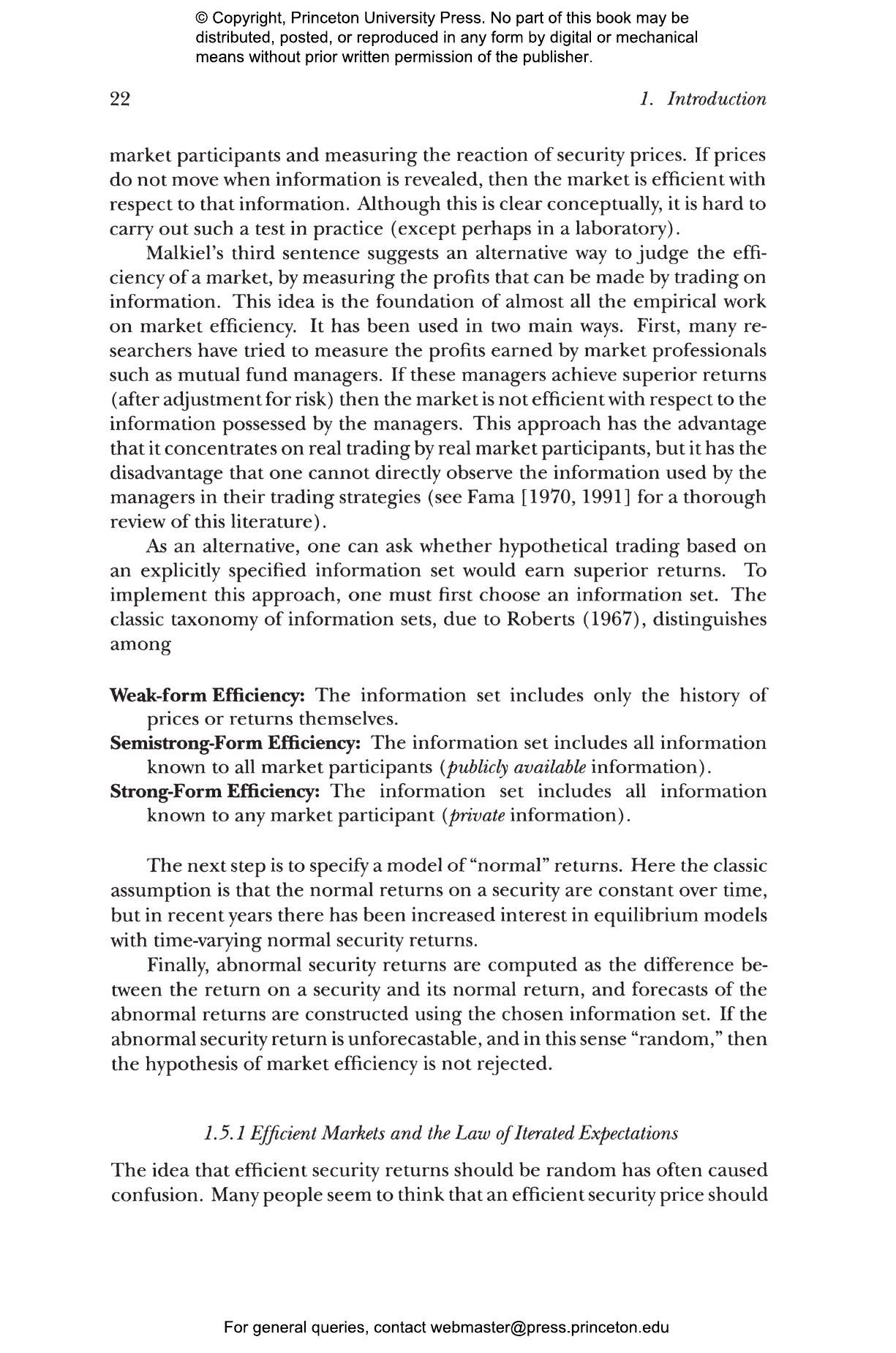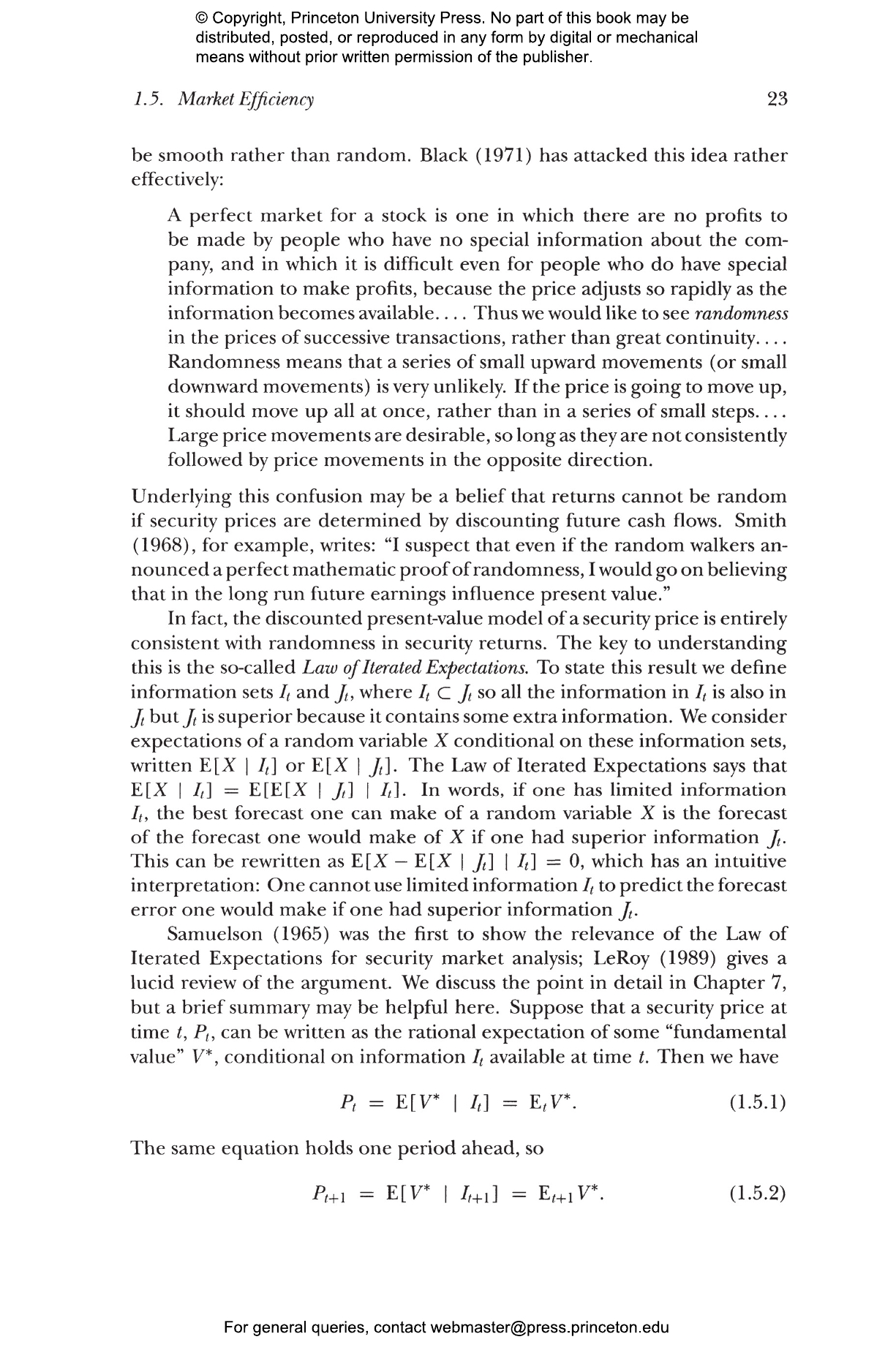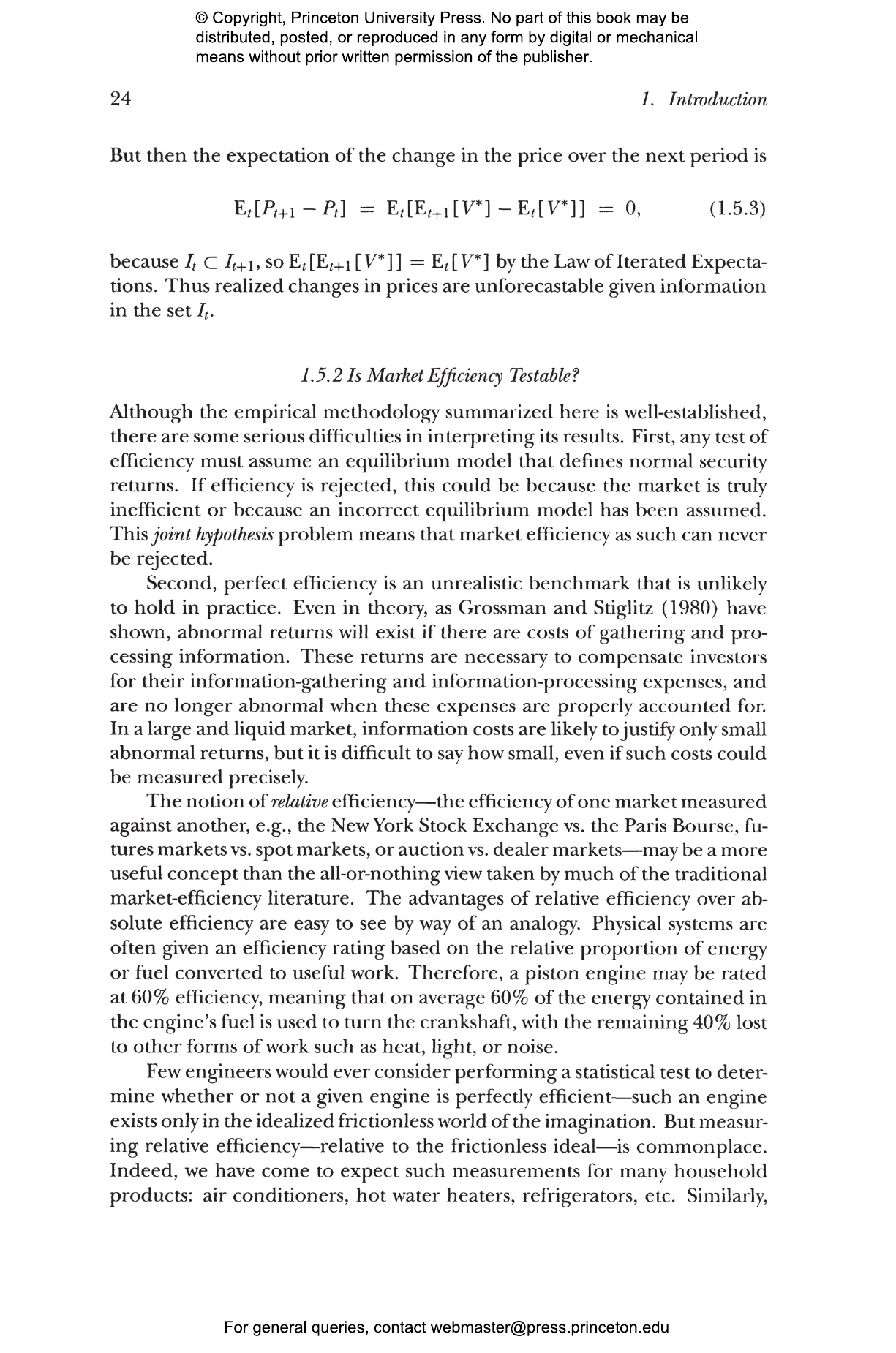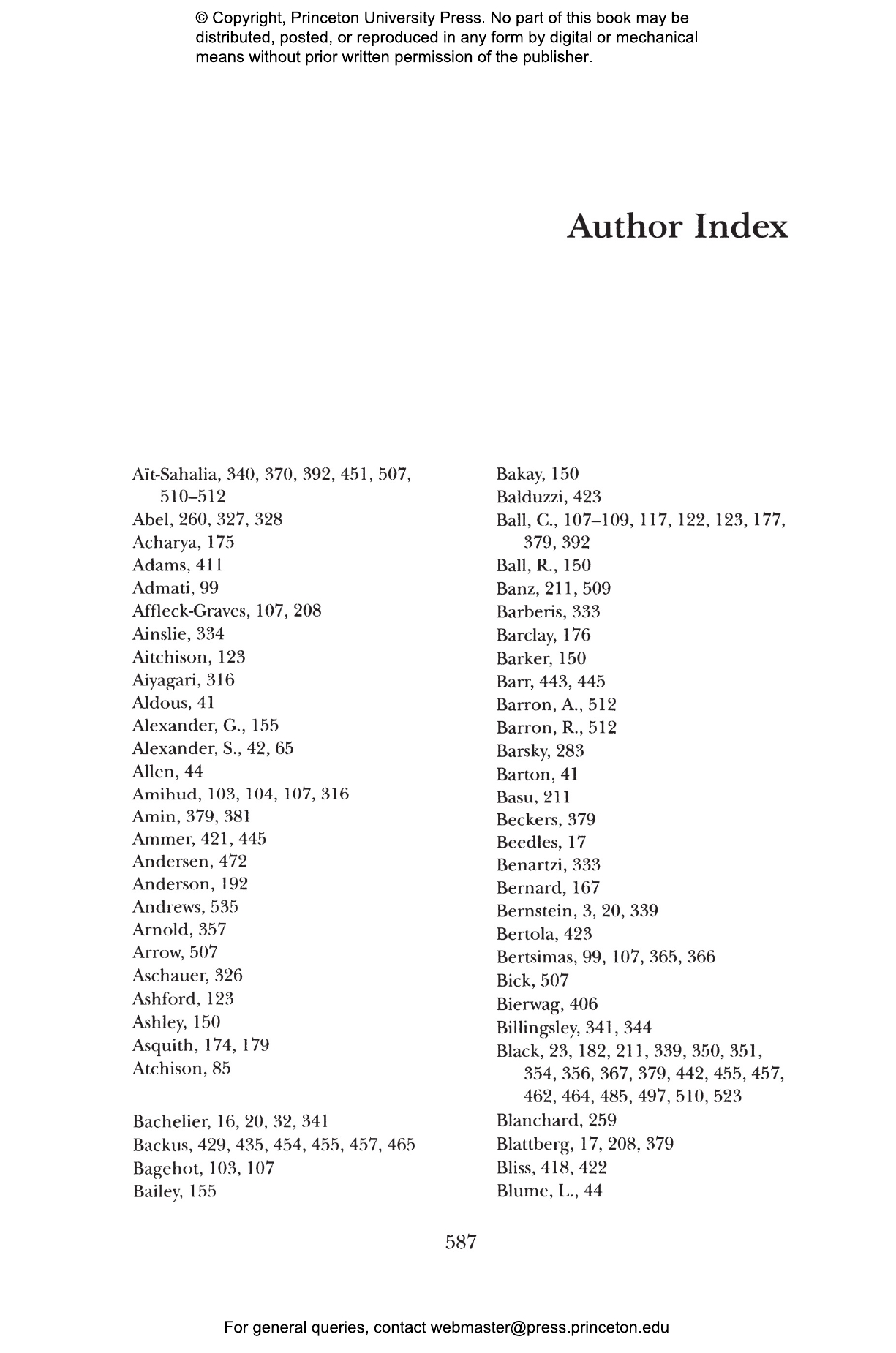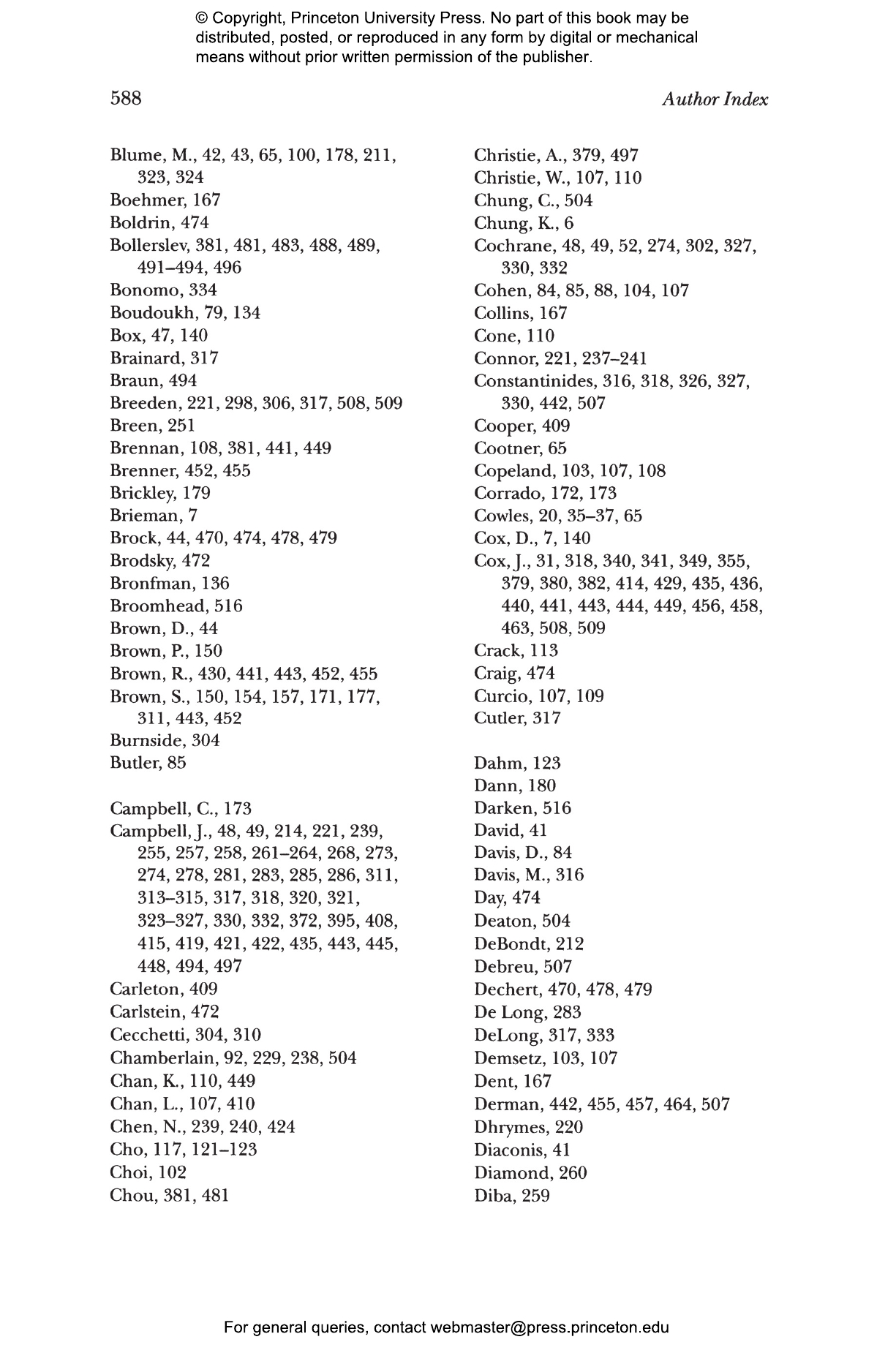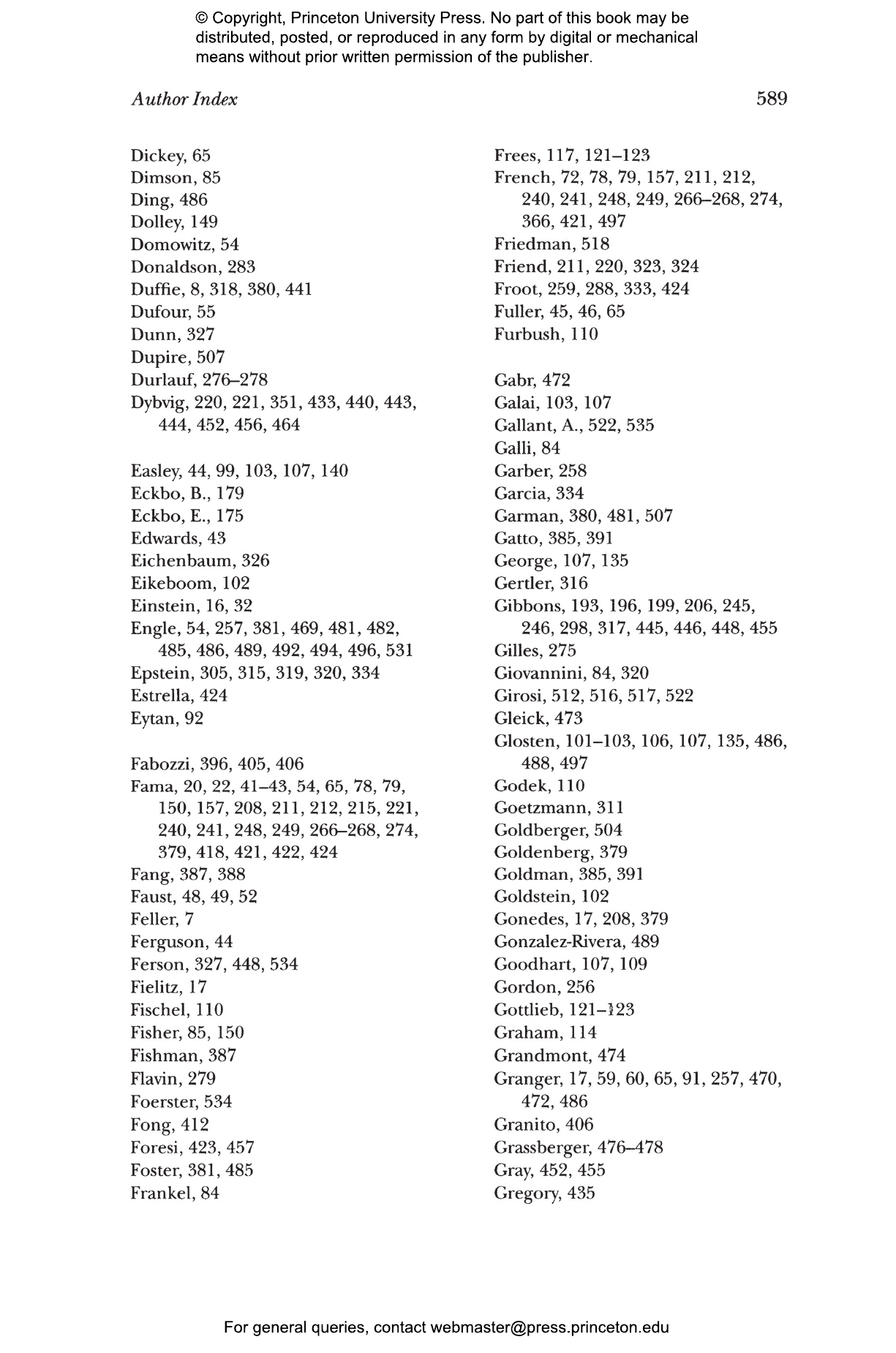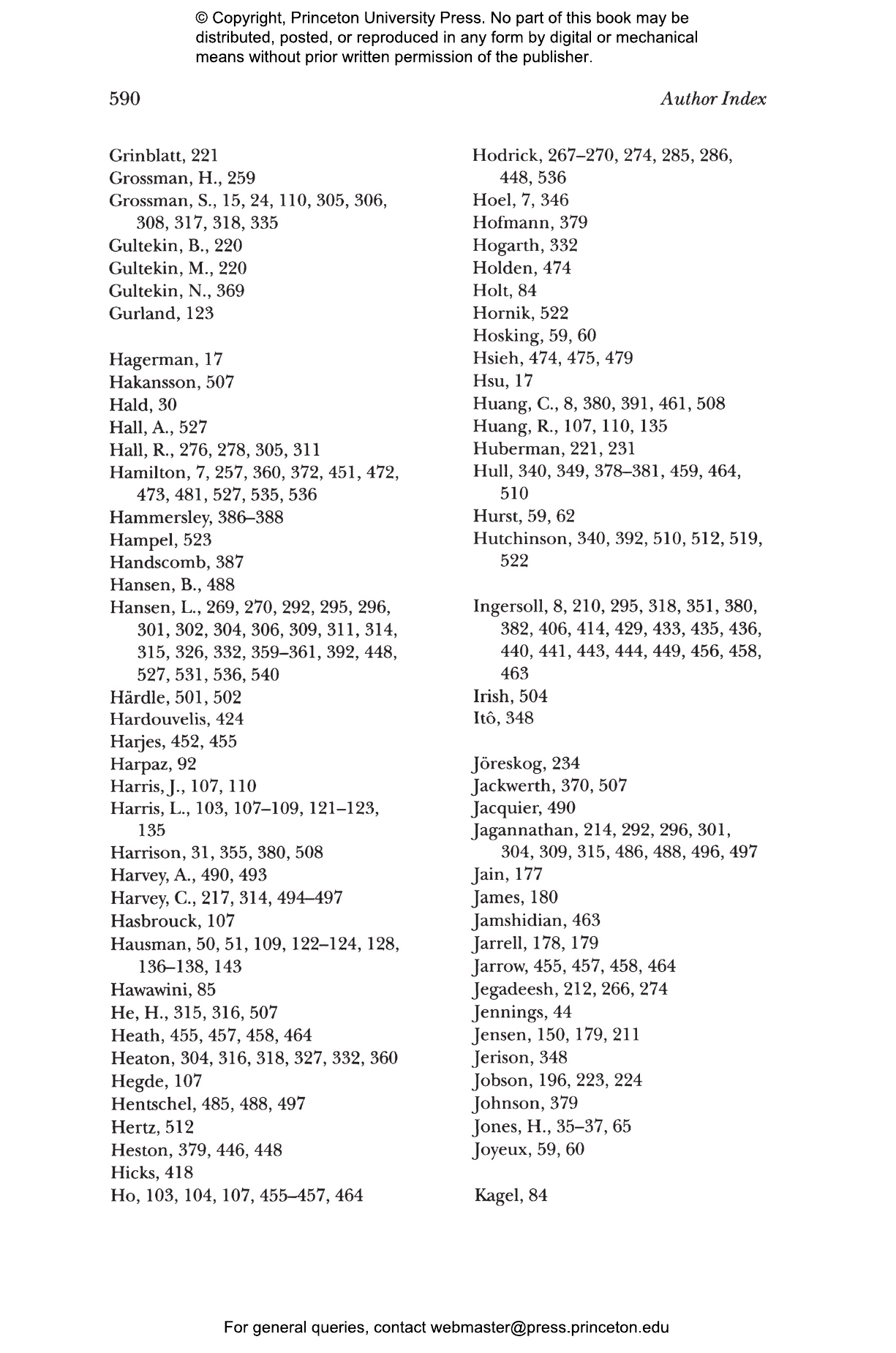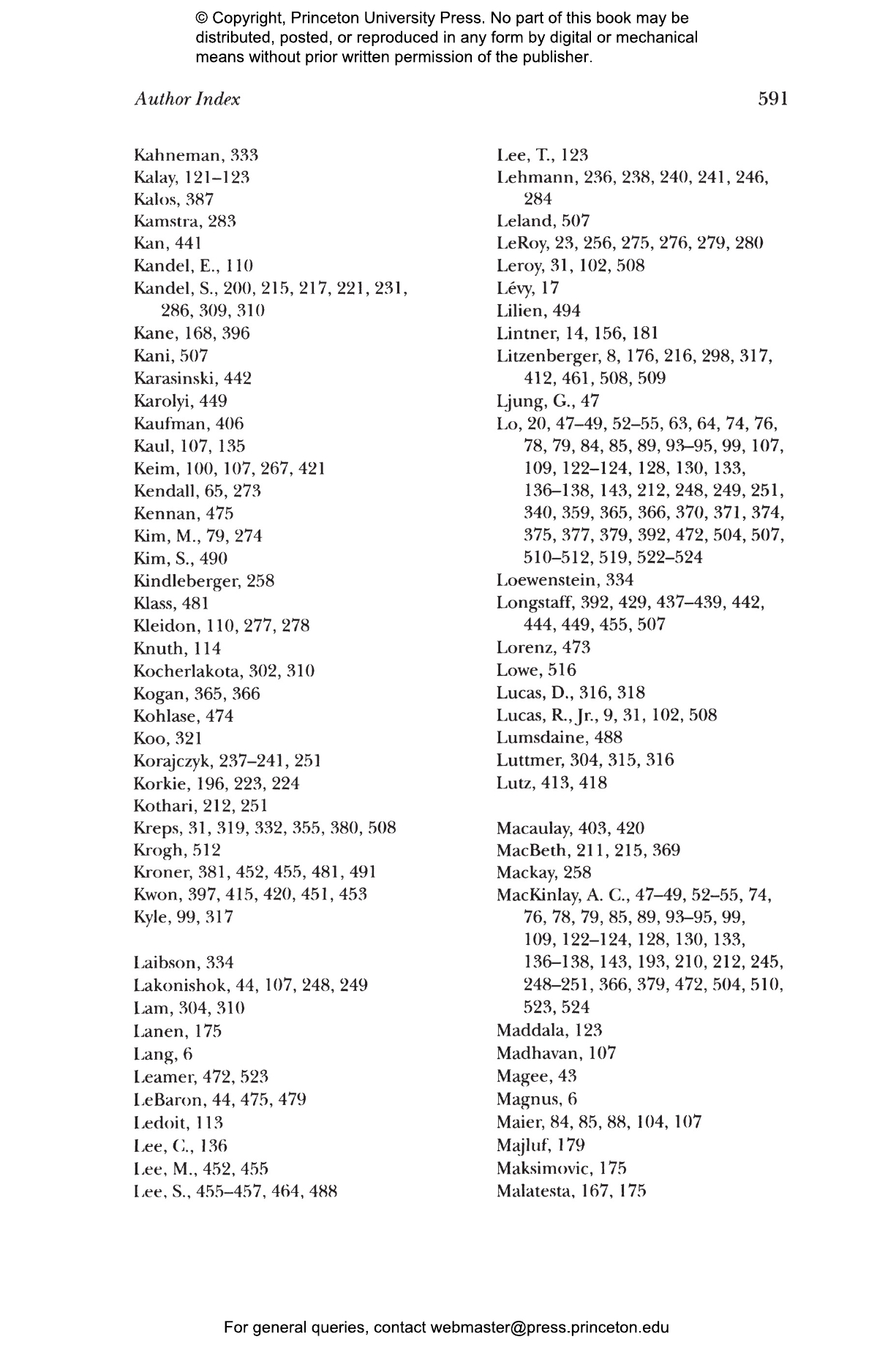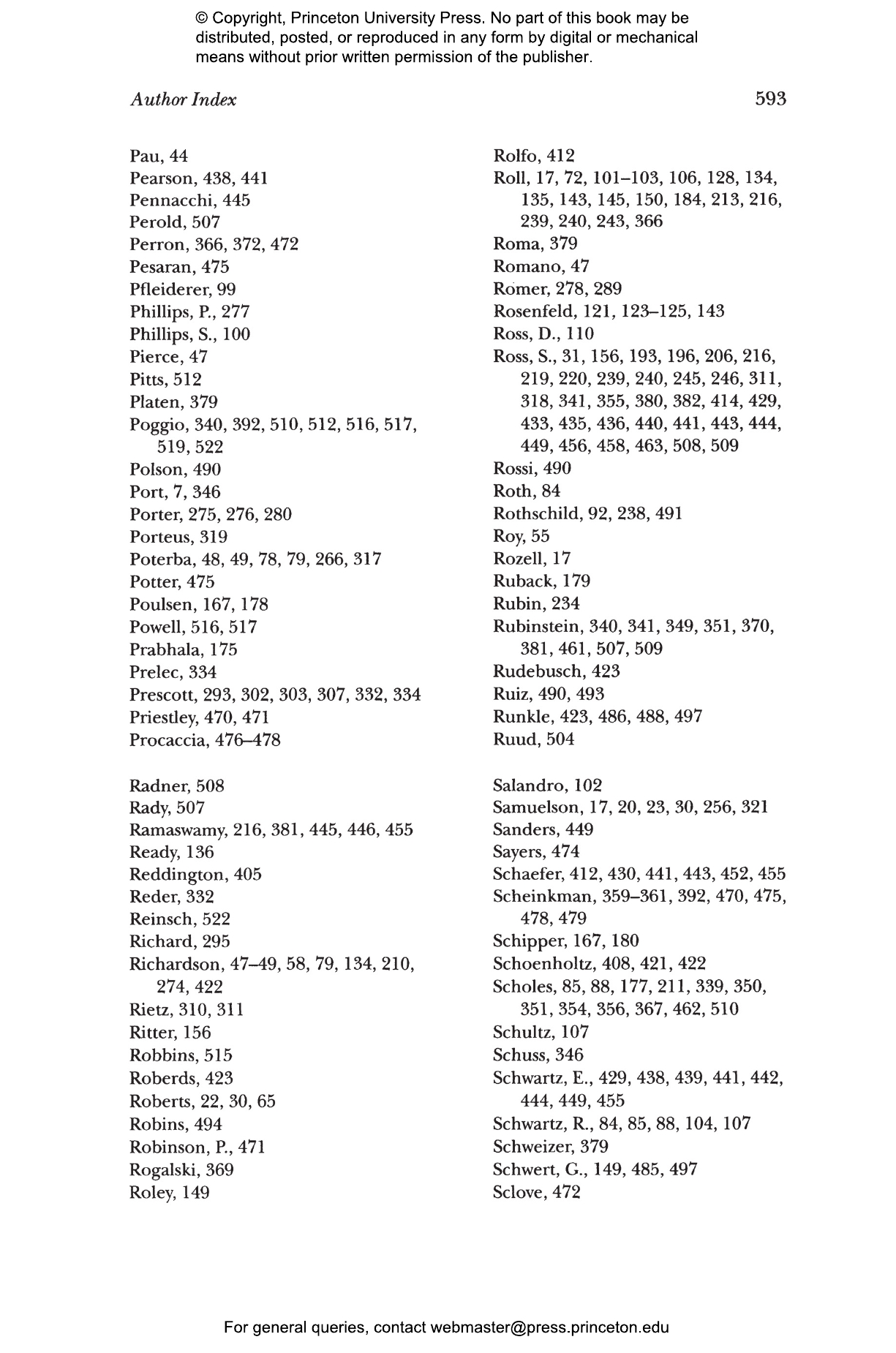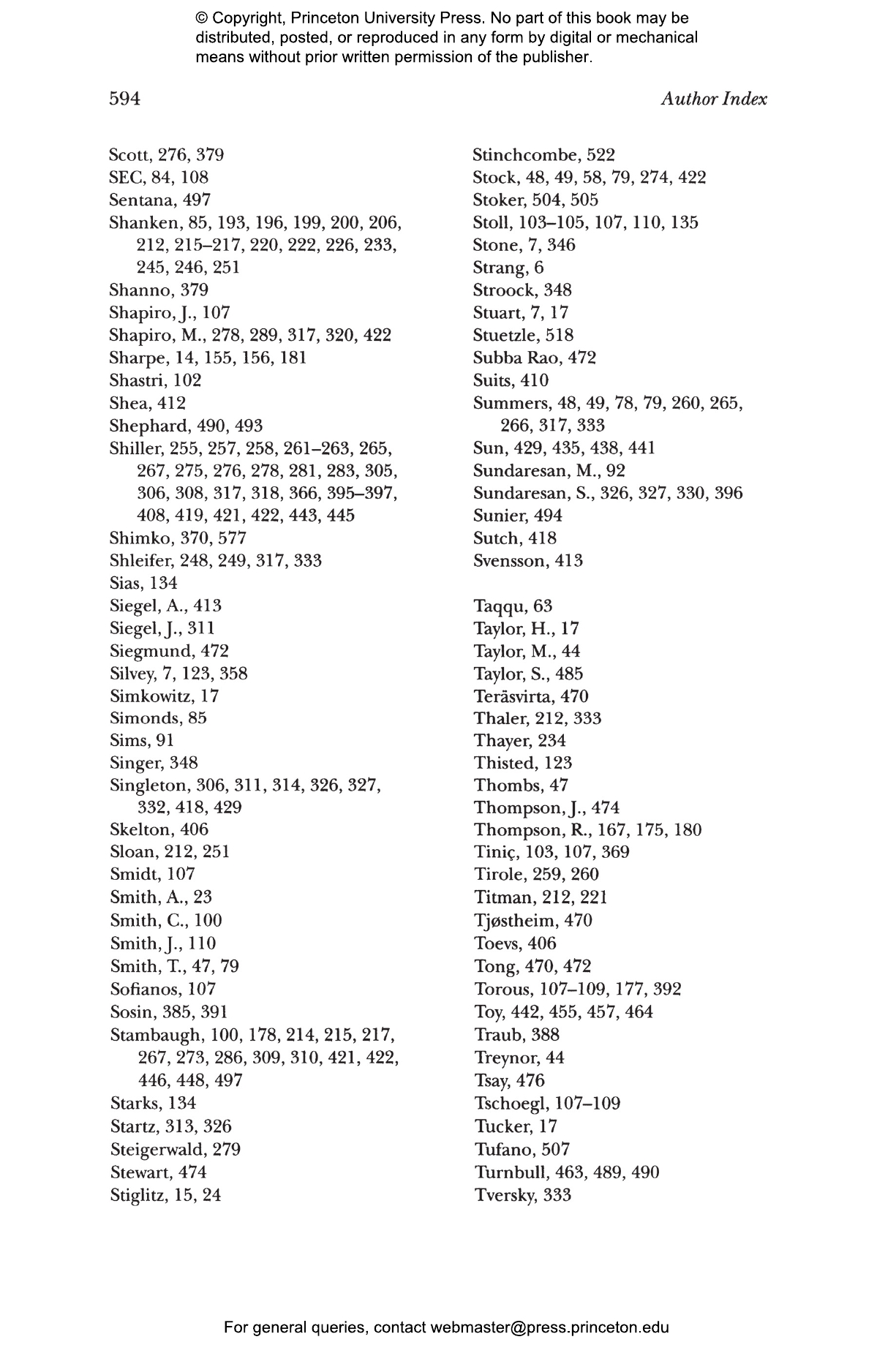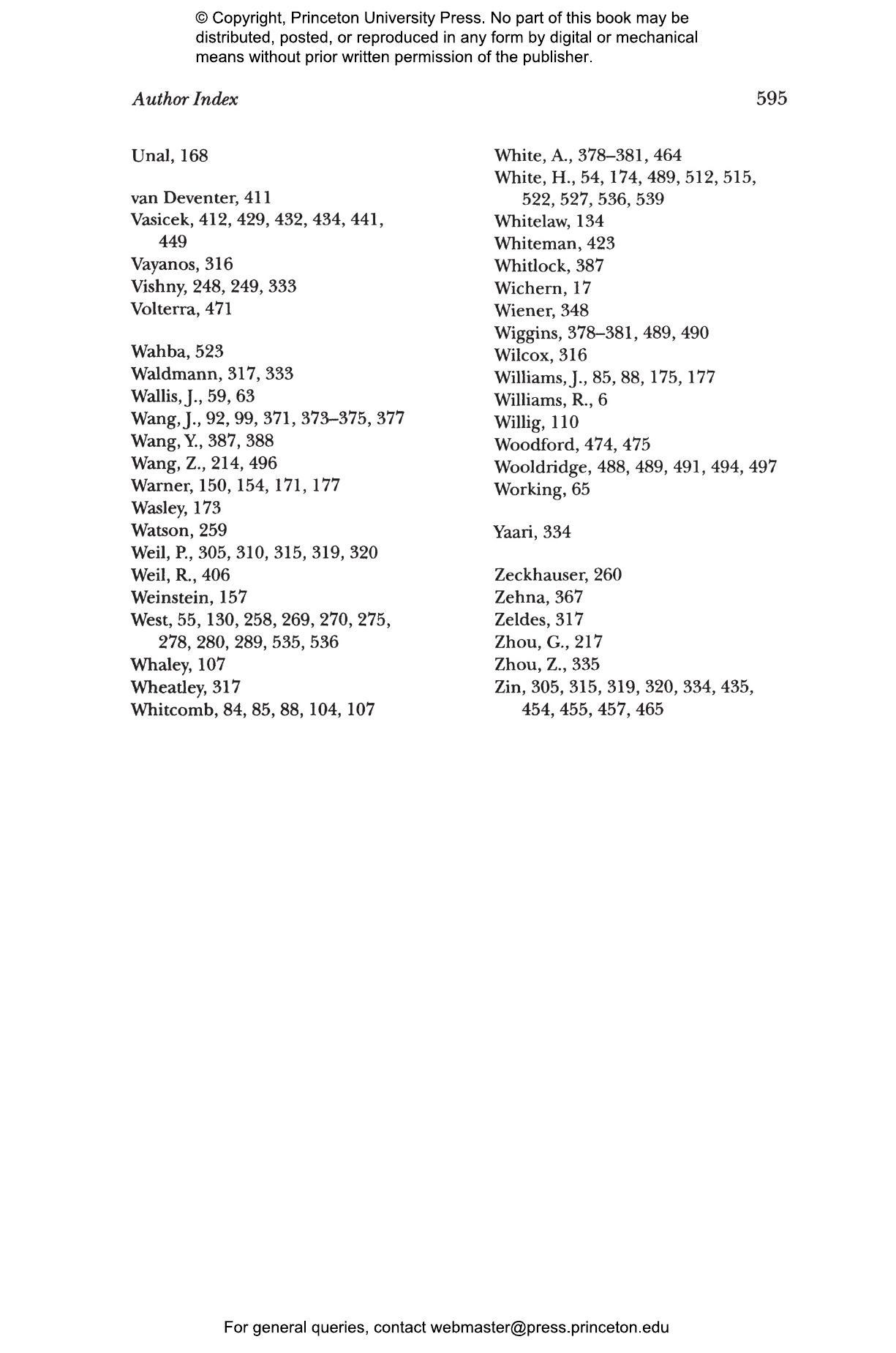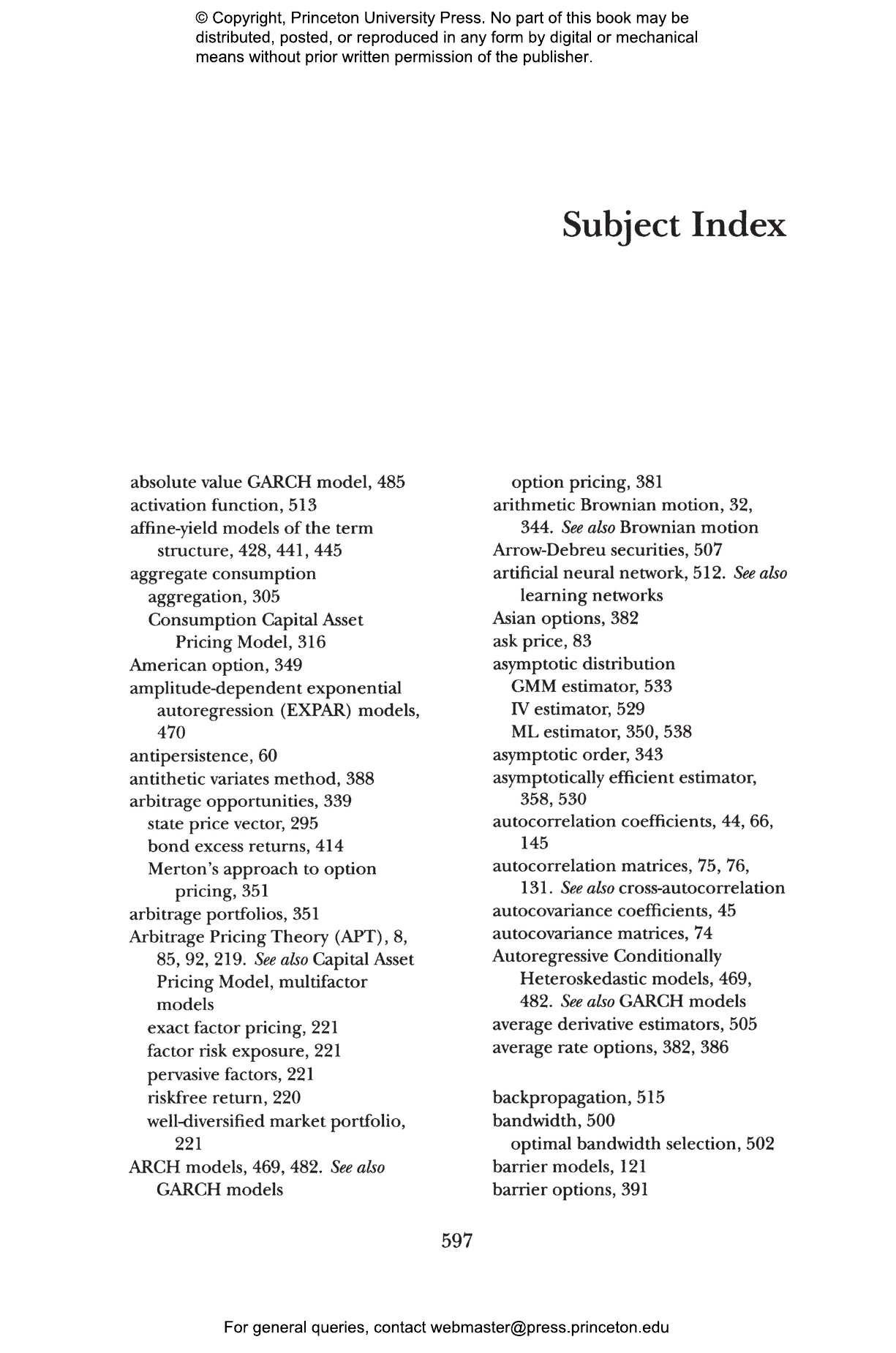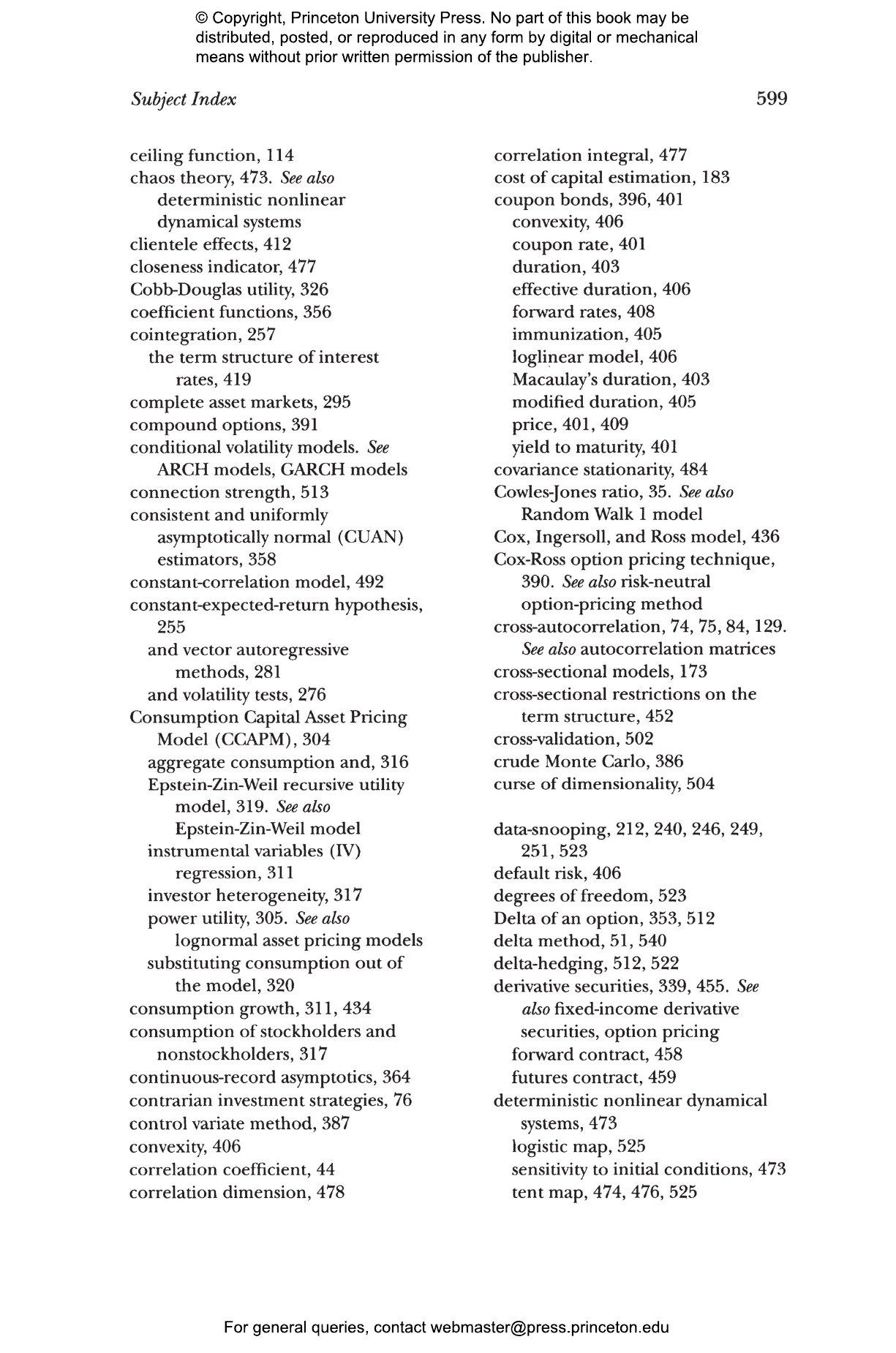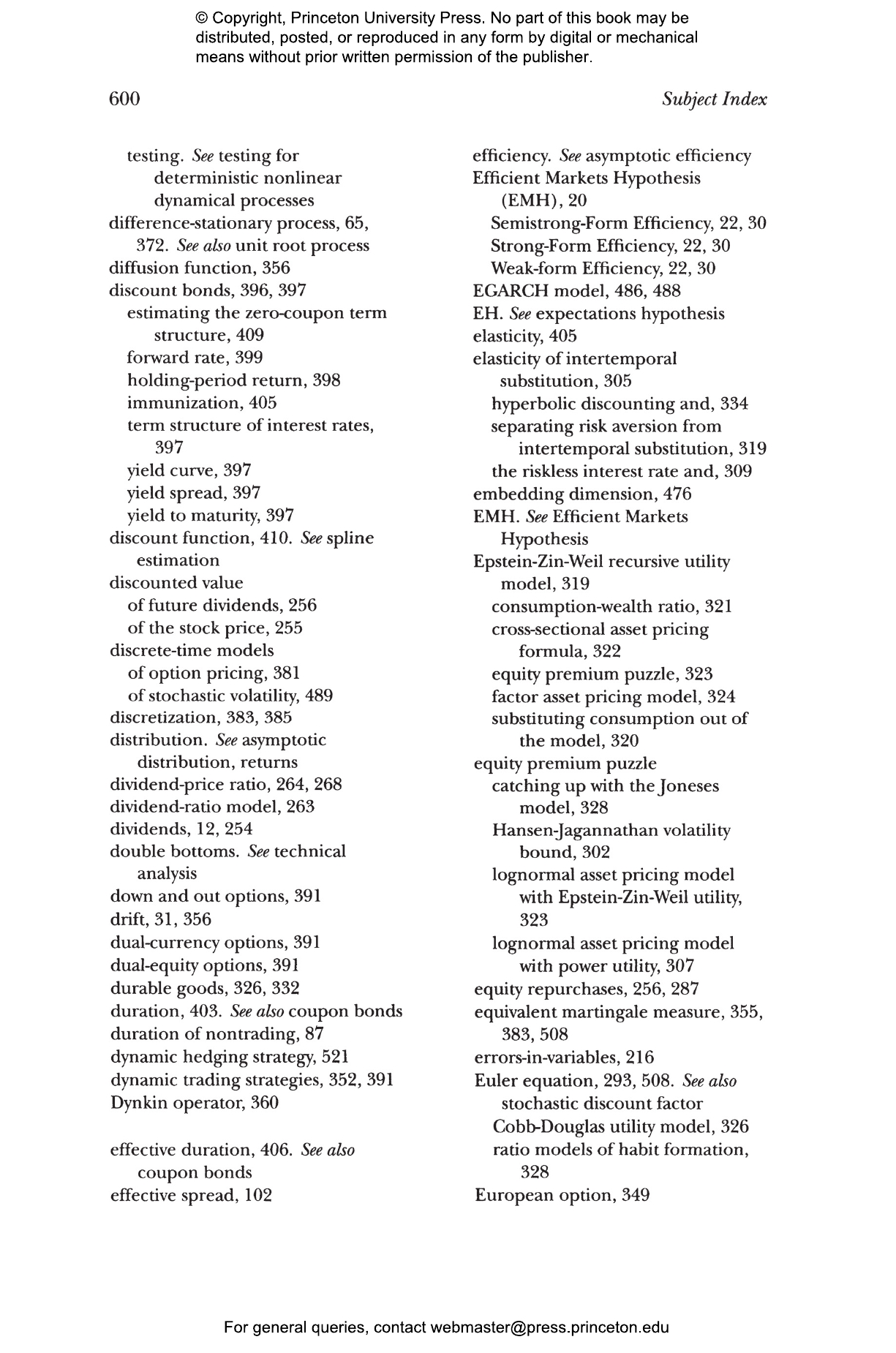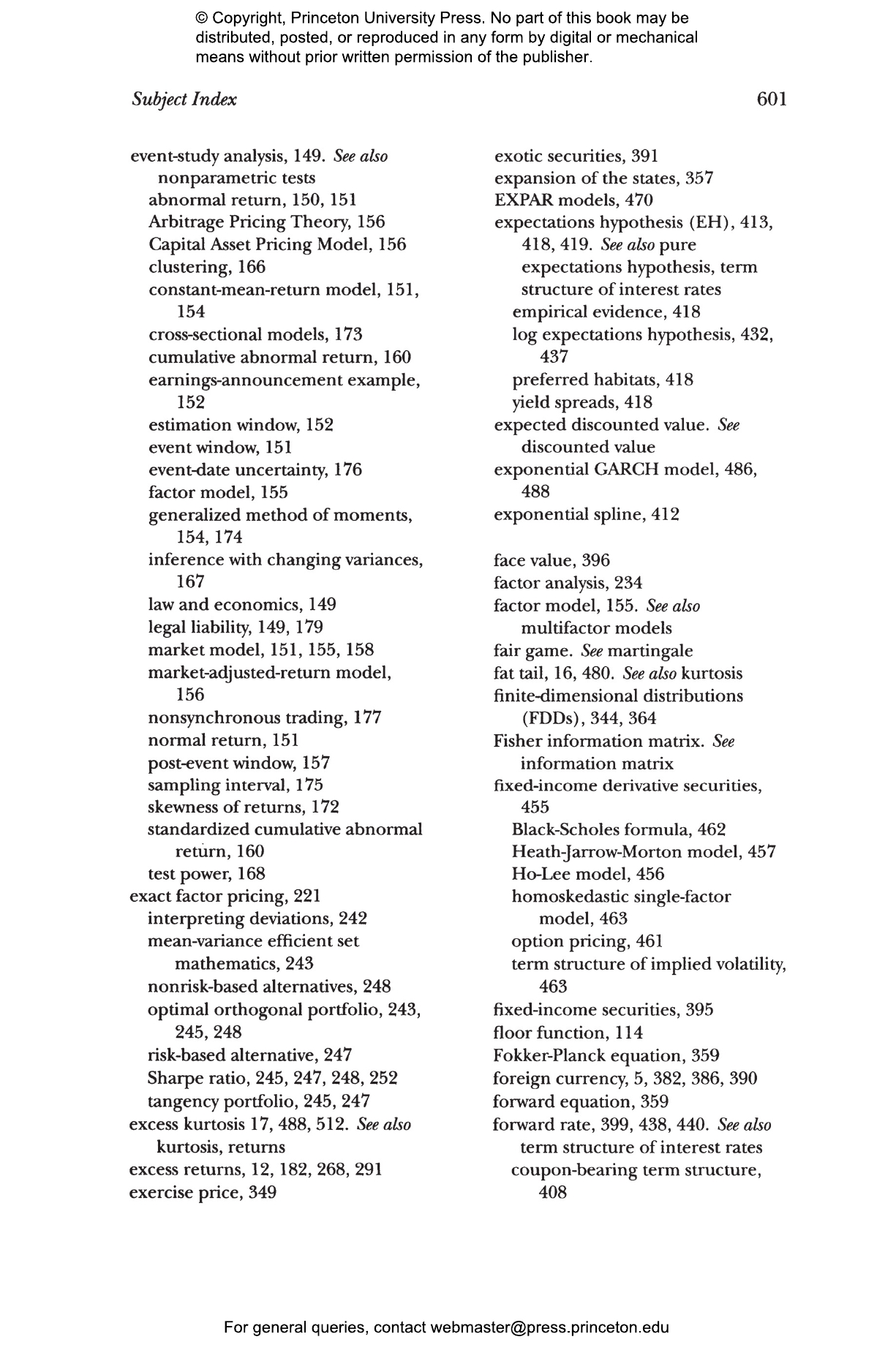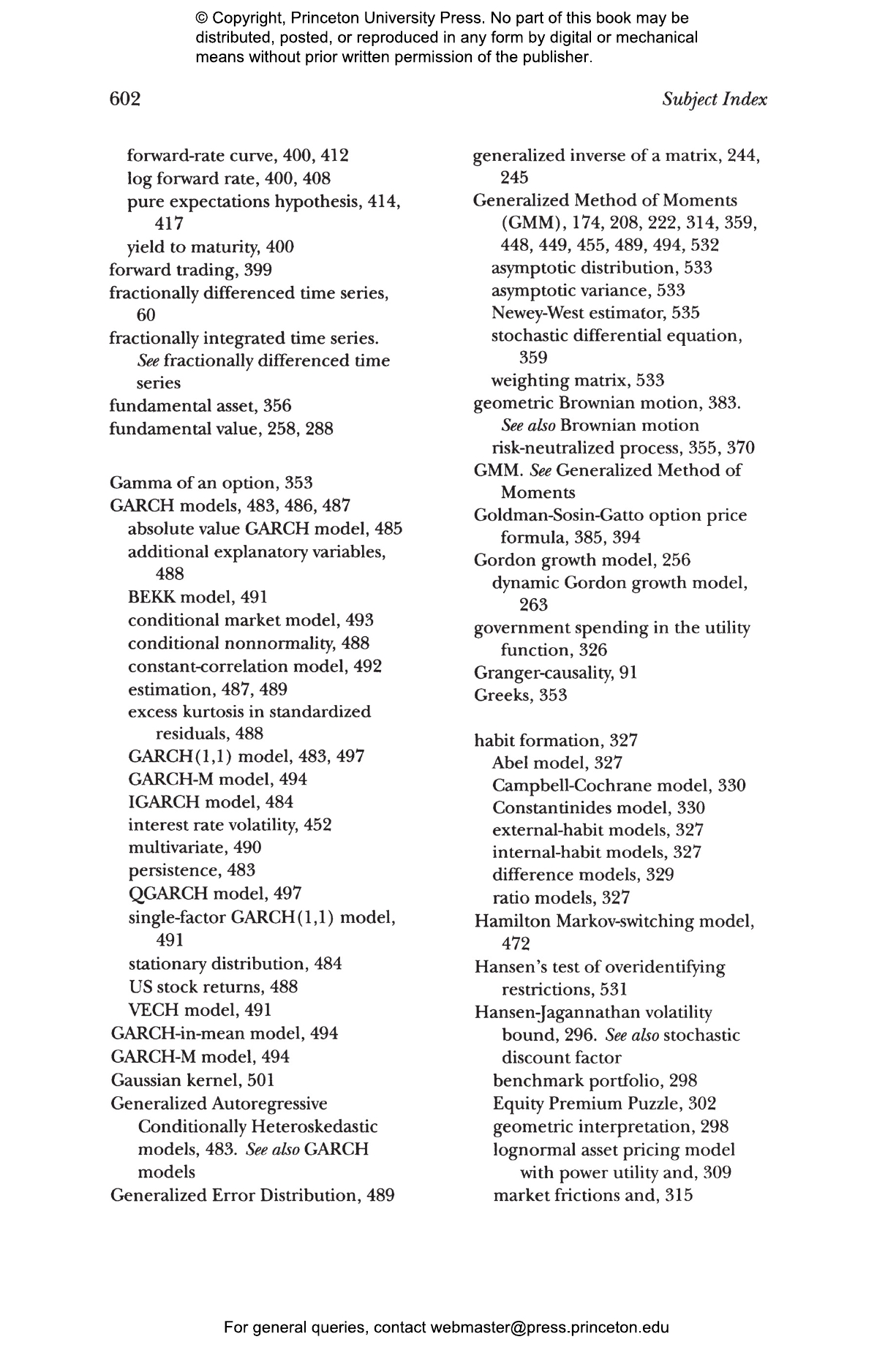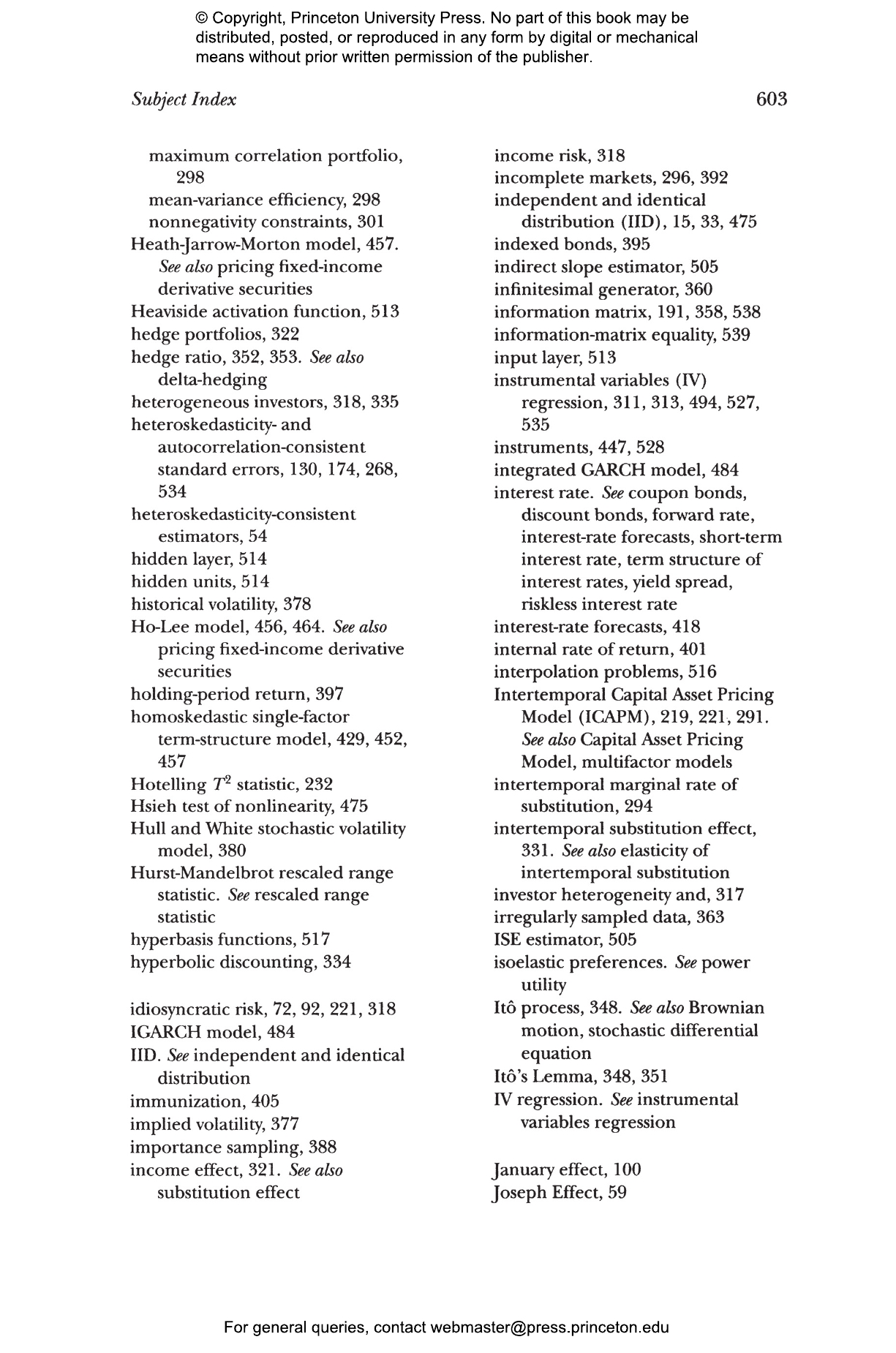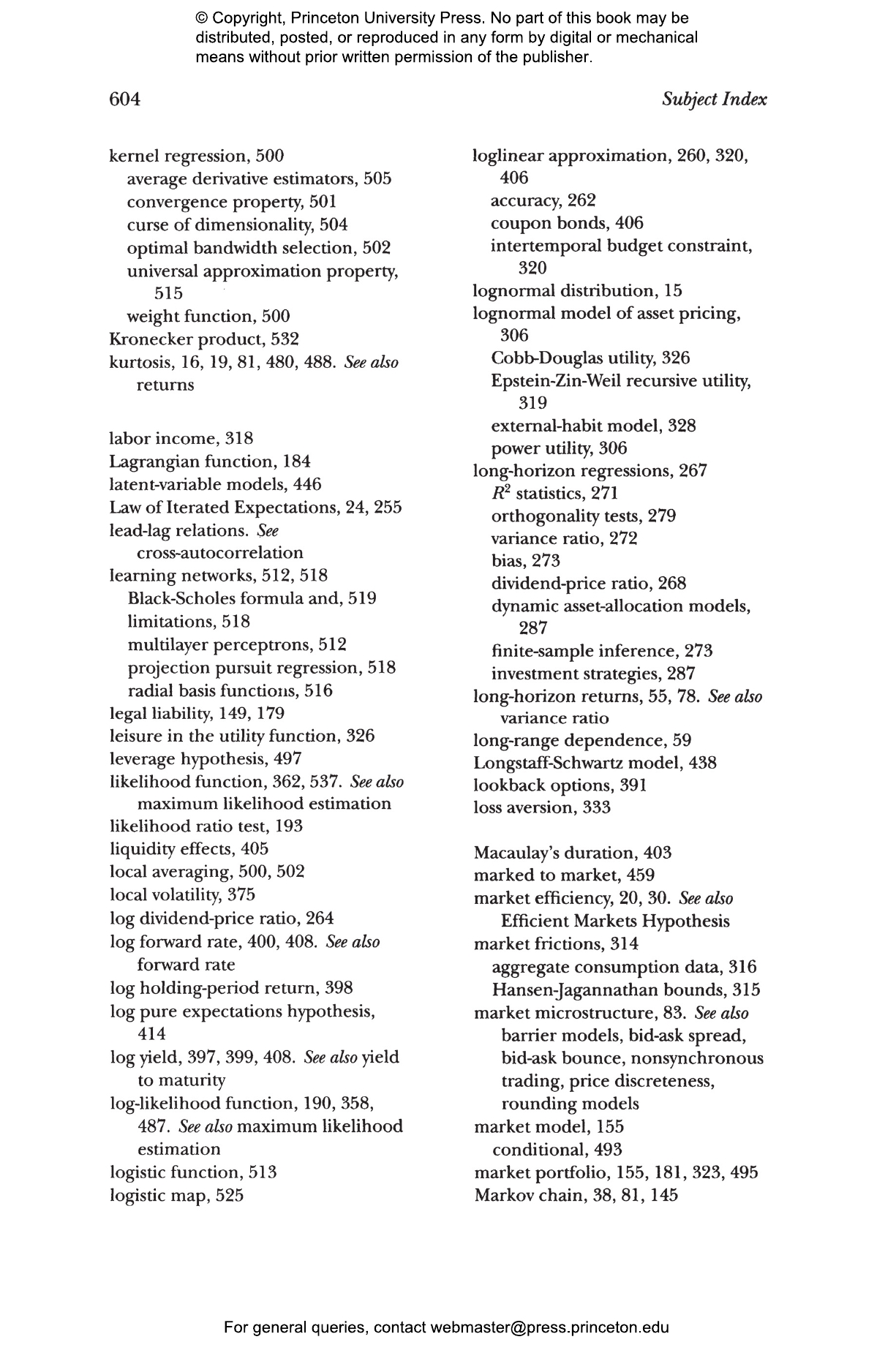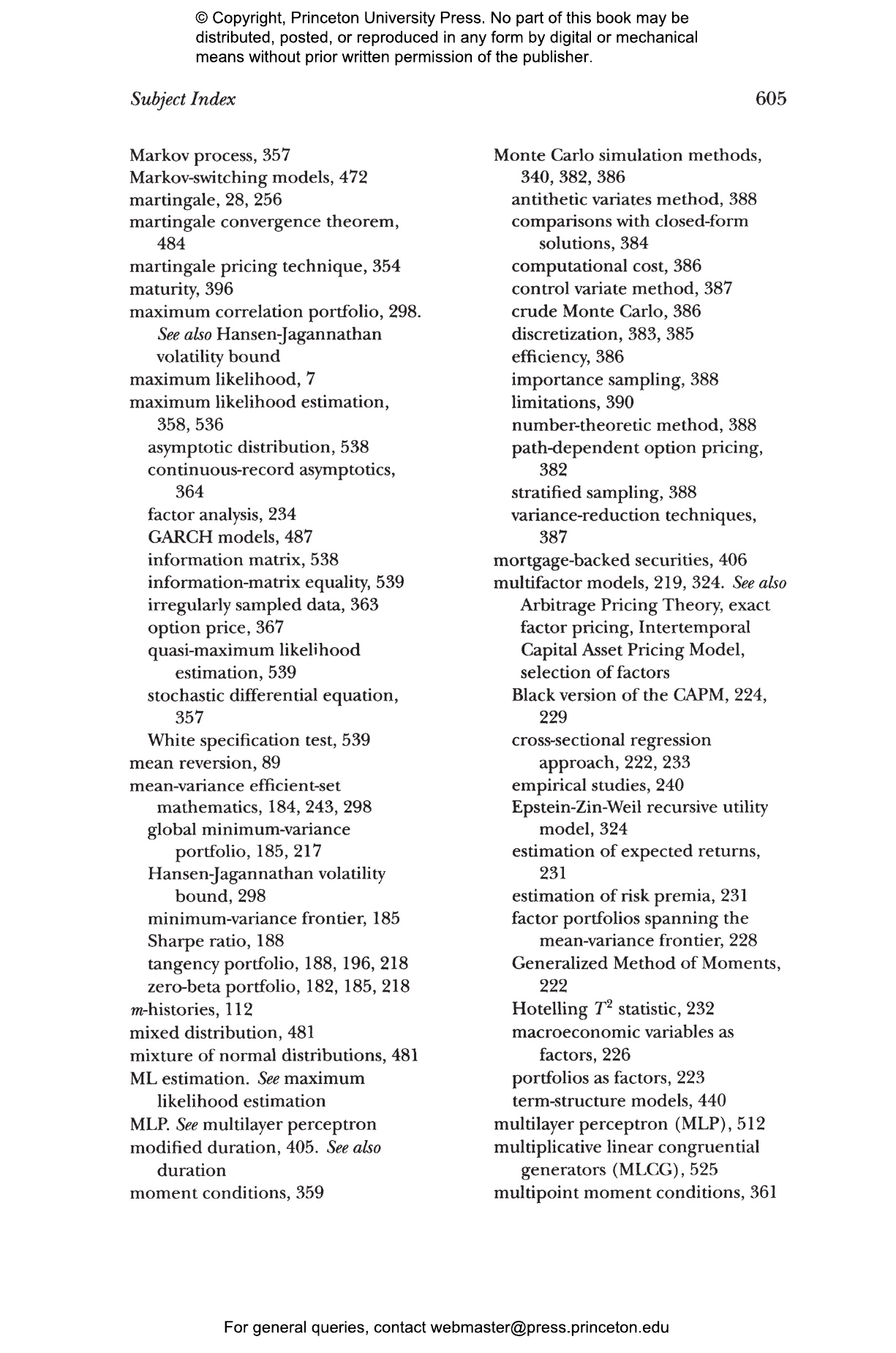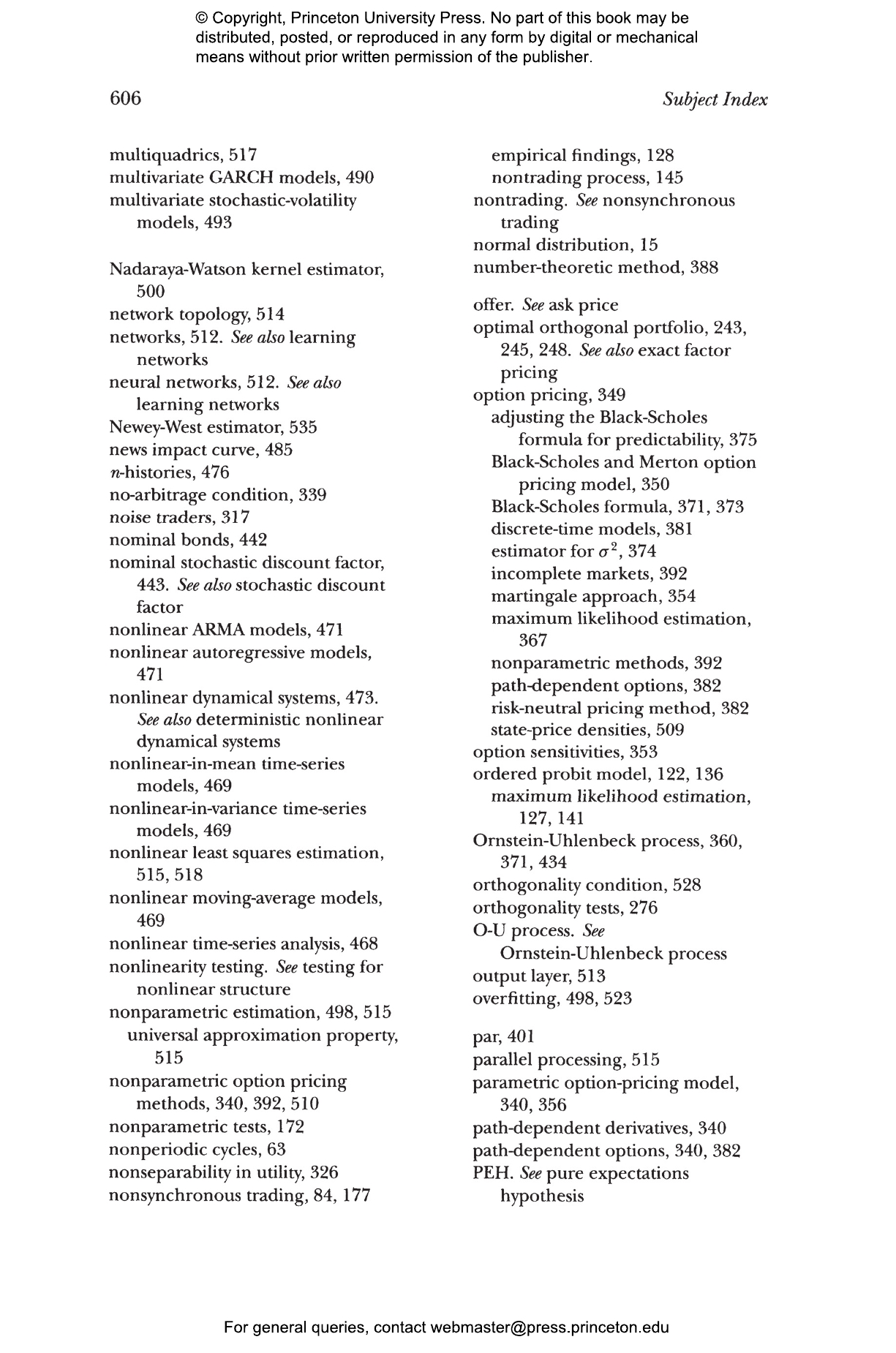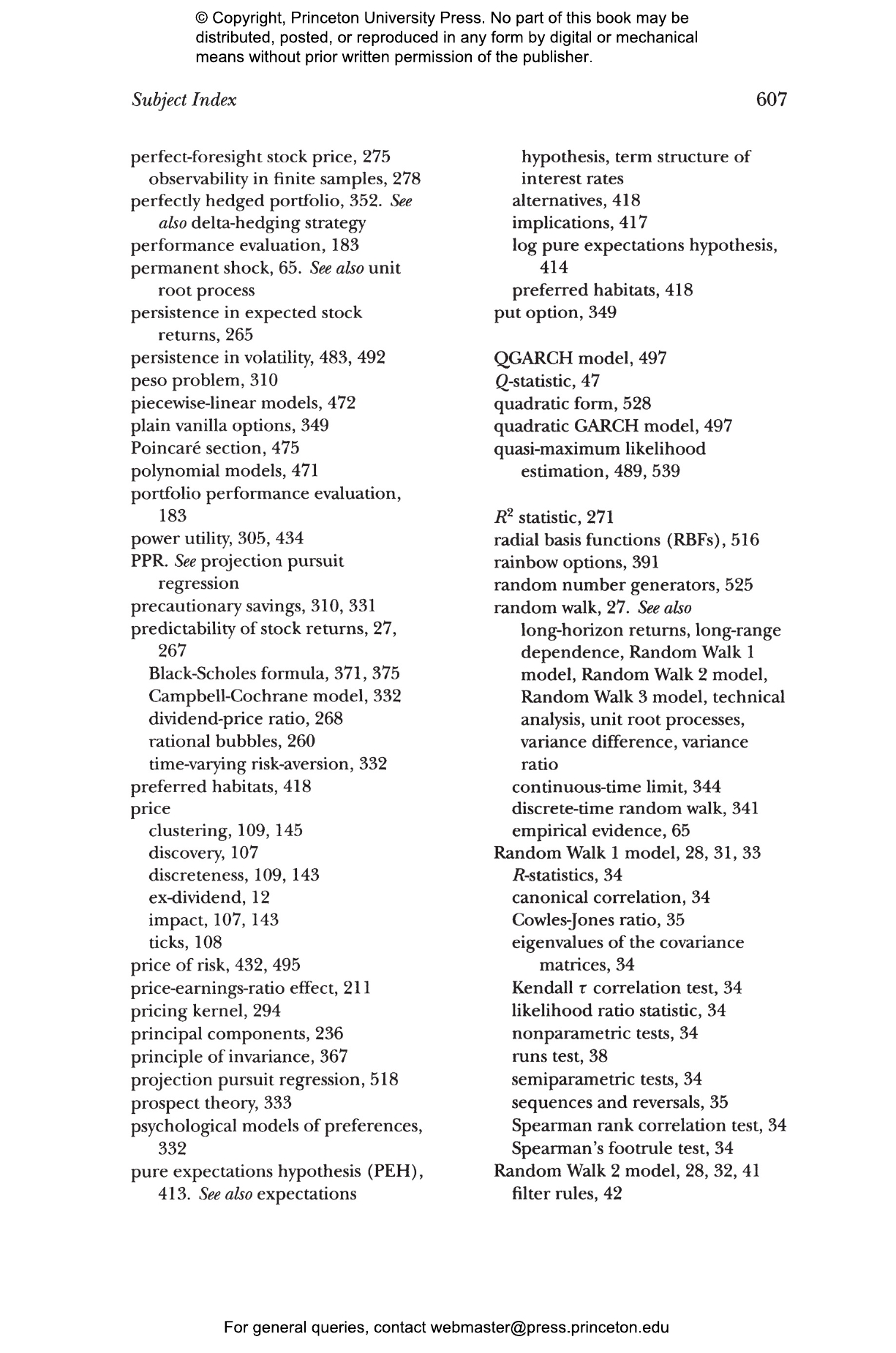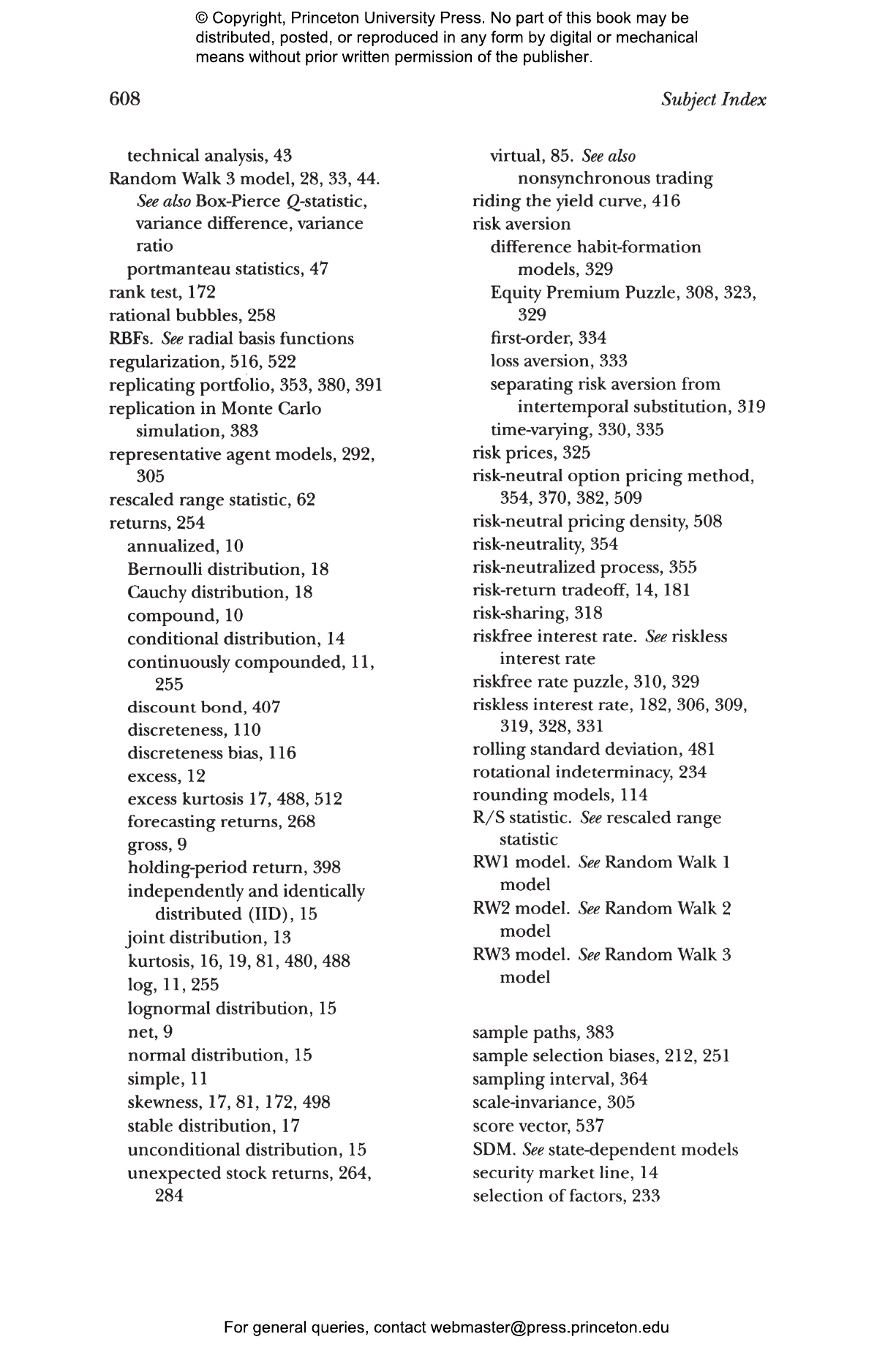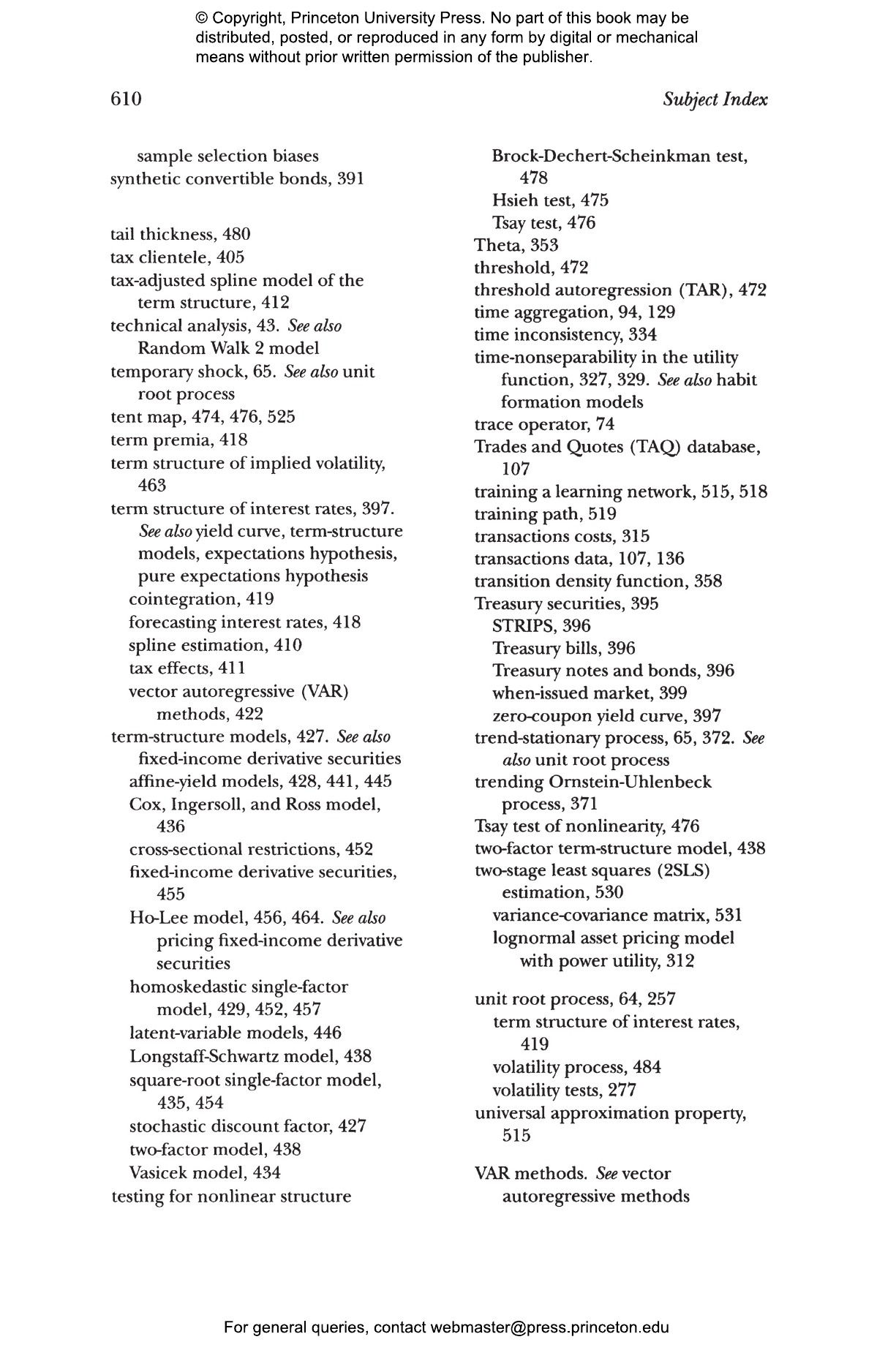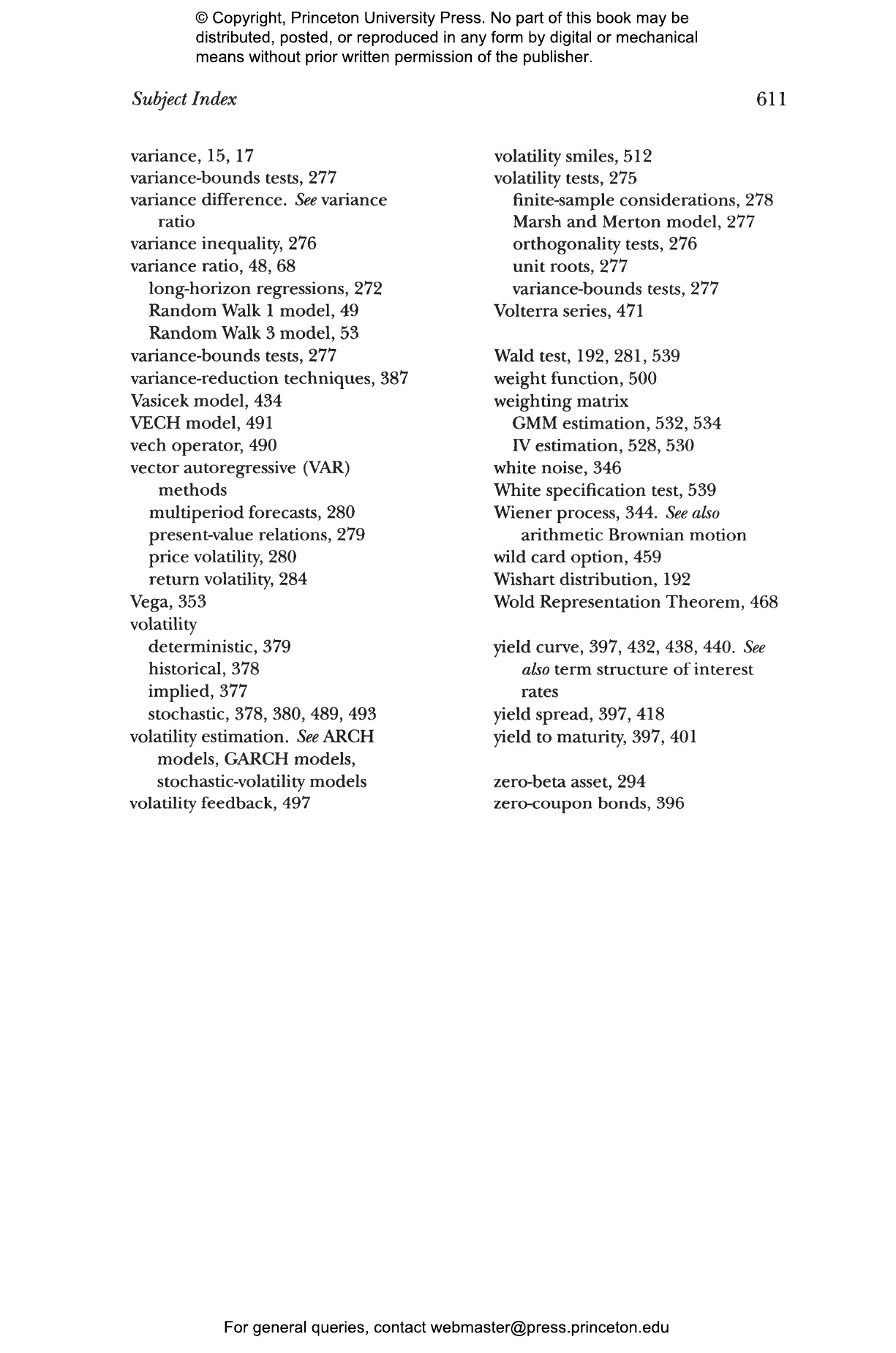Recent decades have seen an extraordinary growth in the use of quantitative methods in financial markets. Finance professionals routinely use sophisticated statistical techniques in portfolio management, proprietary trading, risk management, financial consulting, and securities regulation. This graduate-level textbook is designed for PhD students, advanced MBA students, and industry professionals interested in the econometrics of financial modeling. The book covers the entire spectrum of empirical finance, including the predictability of asset returns, tests of the Random Walk Hypothesis, the microstructure of securities markets, event analysis, the Capital Asset Pricing Model and the Arbitrage Pricing Theory, the term structure of interest rates, dynamic models of economic equilibrium, and nonlinear financial models such as ARCH, neural networks, statistical fractals, and chaos theory.
Each chapter develops statistical techniques within the context of a particular financial application. This exciting text contains a unique and accessible combination of theory and practice, bringing state-of-the-art statistical techniques to the forefront of financial applications. Each chapter also includes a discussion of recent empirical evidence, for example, the rejection of the Random Walk Hypothesis, as well as problems designed to help readers incorporate what they have learned into their own applications.
Awards and Recognition
- Winner of the 2014 Eugene Fama Prize for Outstanding Contributions to Doctoral Education, University of Chicago Booth School of Business
- Winner of the 1997 Award for Best Professional/Scholarly Book in Economics, Association of American Publishers
- Winner of the 1997 Paul A. Samuelson Award, TIAA-CREF
John Y. Campbell is the Morton L. and Carole S. Olshan Professor of Economics at Harvard University. He is the author of Financial Decisions and Markets (Princeton) and the coauthor of Strategic Asset Allocation. Andrew W. Lo is the Charles E. and Susan T. Harris Professor at the MIT Sloan School of Management, director of the MIT Laboratory for Financial Engineering, and an external faculty member at the Santa Fe Institute. His books include Adaptive Markets and Hedge Funds (both Princeton). A. Craig MacKinlay is the Joseph P. Wargrove Professor of Finance at the Wharton School, University of Pennsylvania, where he is also an academic director at the Jacobs Levy Equity Management Center for Quantitative Financial Research. MacKinlay and Lo are the authors of A Non-Random Walk Down Wall Street (Princeton).
"The definitive work explaining this complex but important field of academic endeavor. Oh, and by the way, it's not just academic. The big question that financial econometircs addresses is: What can you learn about the future from the financial data available from the past? This broad issue can be specified in many different ways, and all the important ones are discussed in the book. . . . The vast literature on all the topics examined is assessed, rendered coherent, and then analysed by three men who themselves have made significant advances in the field."—Ruben Lee, London Financial Market
"This book is sophisticated, yet accessible; full of details, yet intriguing. . . . Instructors will appreciate the attempt to make each chapter as self contained as possible which leaves them free to choose specified sequences of topics. Professionals will be pleased with the quick and authoritative introductions to important areas of Finance. . . . [A] well written introduction (indeed, something more) to Financial Econometrics. It is alert, explicit and articulate about assumptions . . . a splendid offering."—Maurizio Tiso, Review of Financial Studies
"Written by the "A" team of financial empiricism, it is a long awaited book. It covers many topics one could only usually find couched in the technical jargon of research papers, presented in this volume with pedagogical intentions. The language, while remaining technical, is quite accessible. It can be effortlessly read by scientific traders with standard knowledge of statistical methods. . . . This book should be made mandatory reading in research departments."—Derivative Strategies


